
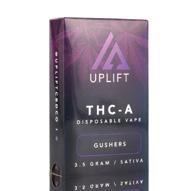

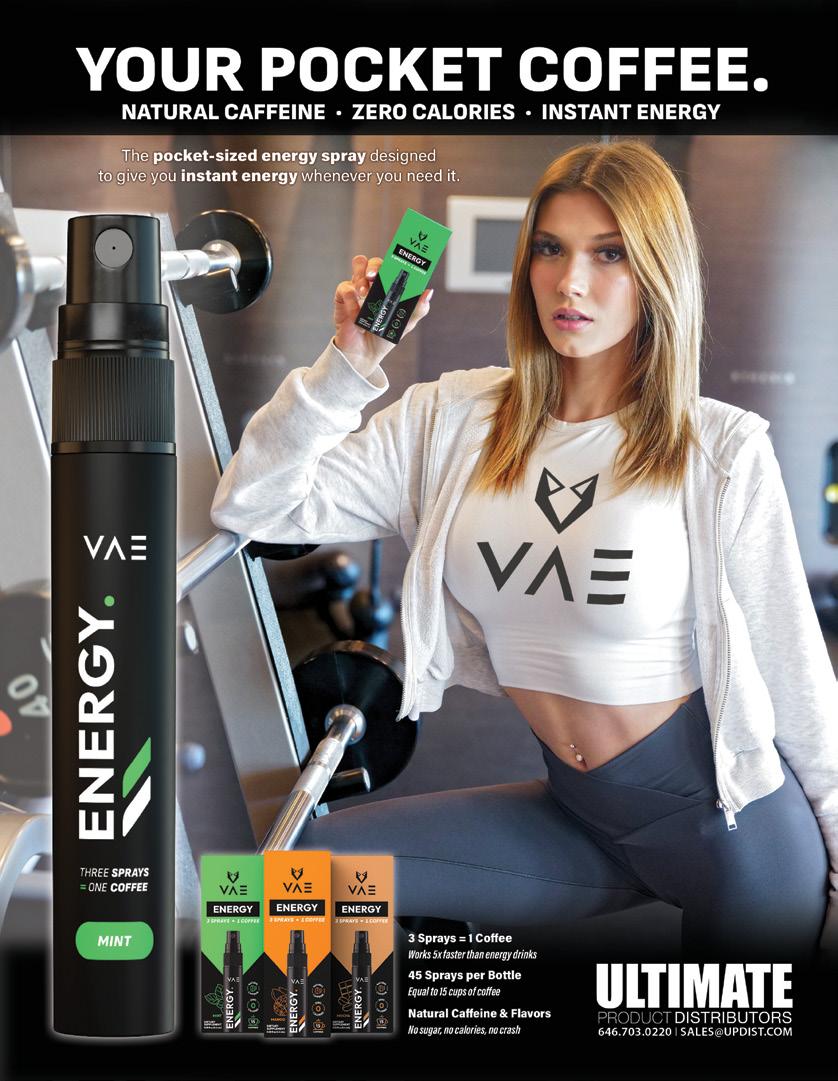

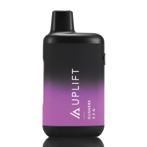

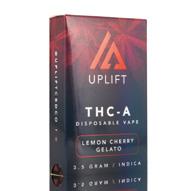
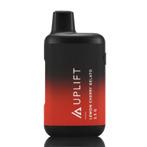
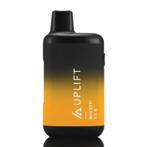
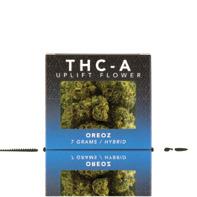



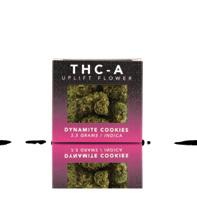
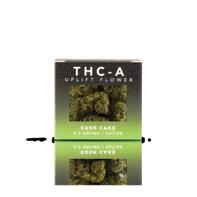

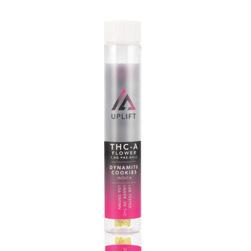





MAY 2024 | ISSUE 288
HQ Magazine
As the industry’s leading publication for over two decades, we want to remind you all that we are more than just another magazine; WE are the nexus of commerce for the counterculture marketplace; headshops, smoke shops, vape shops, adult novelties, and dispensaries. Both publisher and platform, HQ exists to facilitate the continued evolution of a once-marginalized industry now on the cusp of legitimization. As a publisher, we are your advocate and your advisor, your continual stream of all information that matters to you; from product knowledge, to business insights, to how it all fits into the panorama of the bigger world. As a platform, we are your connection. We are the bullhorn, the billboard, and the bridge; the perfect bullseye of your target market. And as this industry continues to come into its own and navigate the coming seismic shifts in the landscape, we’ll be the light to guide its steps.


HQ EXPERIENCE
HQ Magazine, the industry’s longest-running publication, remains committed to serving the smoke shop community. With an unwavering dedication to delivering award-winning content, and relevant news and providing insight into the latest and greatest industry products, HQ will continue to seek out the best way to reach as many subscribers as possible.
With HQ’s recent acquisition, the tides are turning and we know that YOU are ready for something new, something BIG. If you are looking for an upgraded experience, join HQ’s Elite membership program by scanning the QR code below. With each membership, you will receive HQ Magazine each month with no service interruptions, free access to HQ’s digital magazine, exclusive o ers from our advertisers, and periodic sample boxes from the industry’s most trusted brands.
Upgrade your experience today!

Editor-in-Chief
Account Executives
Sandy Caputo Monica Frésquez monica@headquest.com
C: (505) 489-3285
Marc Toretzky sales@headquest.com
C: (213) 304-3751
David Pogge david@headquest.com C: (404) 477-7009
Therese Galati accounting@headquest.com
Darin Burt darinburt@headquest.com Sofia Noillif editorial@headquest.com
Matt Weeks editorial@headquest.com
Eva Berlin Sylvestre editorial@headquest.com
Rudy Carrillo editorial@headquest.com
Kim Airs editorial@headquest.com
Ryan Mills editorial@headquest.com Creative
HEADQUEST INTERNATIONAL LLC. assumes no responsibility for contents herein. Opinions expressed in articles are strictly those of the writer.
Published monthly by Headquest International LLC., 6300 Riverside Plaza LN. NW., Suite 100, Albuquerque, NM 87120. Send address change requests (please include information from the shipping label) to the address above, call 505-275-6049, or email subscriptions@headquest.com.
HQ has no a liates or outside sales team. Any business or person contacting you and acting as an HQ Representative or claiming a liation with HQ Publications is unlawfully misrepresenting himself or herself. Please contact sandy@headquest.com if you are approached by any such entity.
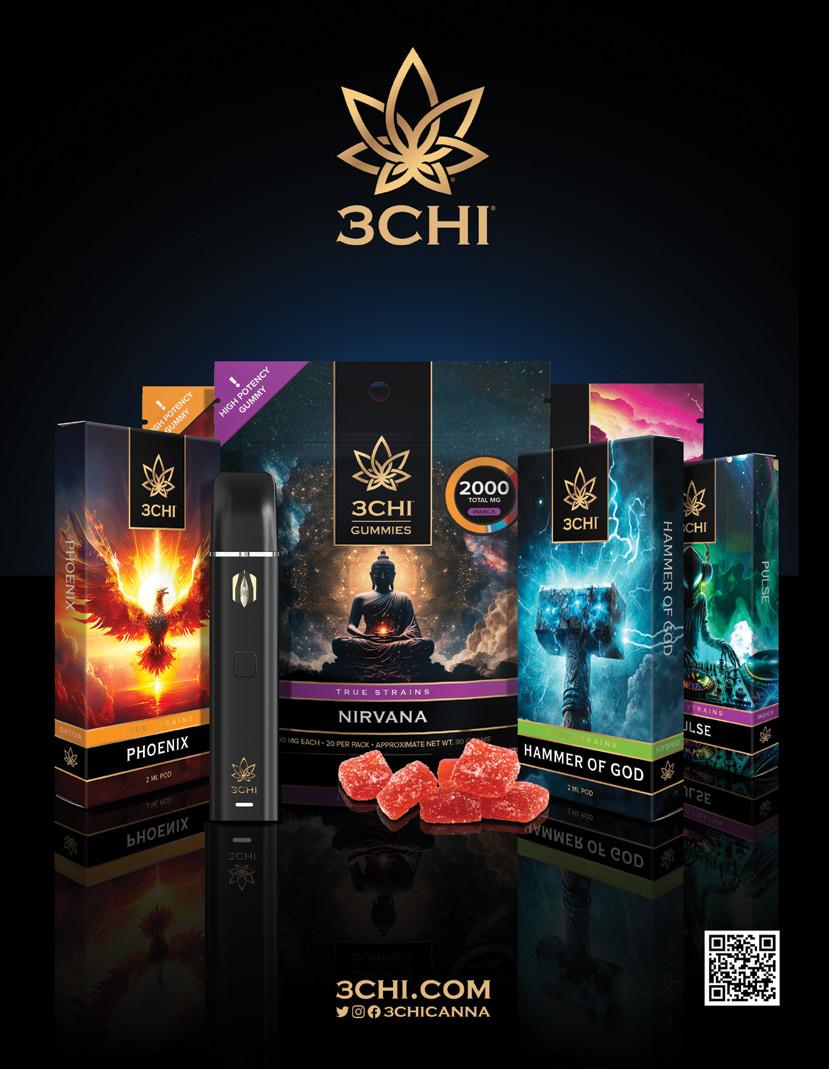

Printed in Canada on recycled paper with vegetable-based inks.
BEWARE!
Renew Your FREE Subscription NOW!
PUBLISHED BY HEADQUEST INTERNATIONAL LLC HeadQuest.com @HQMag1998 @hqmag4u
Media
Social
Director
Writers 2 Magazine May 2024
Billing Contributing


CONTACT
CONTENTS






26
Primary season is over and you’ll never guess who’s on the ballot. Jump in for some light reading for two.
36
TPE and Glass Vegas joined forces and went all Captain Planet on our asses. The sum was definitely greater than the whole.
48
Women in Cannabis
Sharon Letts wants you to eat your green as much as you smoke it.
54
It started with a pair of boots and a pot of soup. Now, it’s a thriving charity funded in part by the glass art of its founder. The Atheist Saint
Walking
68 He just wanted to follow the band. Now he’s stuck with the responsibility of a wildly successful company.

118
Quest 4 the Best
A hearty helping of the “ohmygodigottahavits.”
Our mini-mag within a mag that’s all about the fun side of adulting.
90 Reality Bending Tech: Social media is warping our reality. You should post about it on Faceook so you look thoughtful.
98 Into the Weeds on the Industry’s Stickiest Subjects.
Leaf us Alone: Kratom is taking a beating in the press and the courtroom, but a new study offers hope.
106 Puff, puff, class in session!
Social Settings
Social media is bad for you, sure—but getting kicked off is worse.
112
A Profitable Environment
Saving the planet, one business decision at a time.
& Pleasure
78 There’s more to enhancement than boner pills.
80
Profile
Male Lingerie; The idea born in the 70s that’s so 2024.
82
Sex sells, but it’s apparently cash only.

85 Gadgets and play things to really hit the spot(s).
Smoke
Signals
Pu
Vendor
Feature
PleasureQuest
HeadSpace
EdQuest
HQ After Hours
54 36 48 98 90 68
Trade Show Recap
Deadhead
Head Quest 4 Magazine May 2024





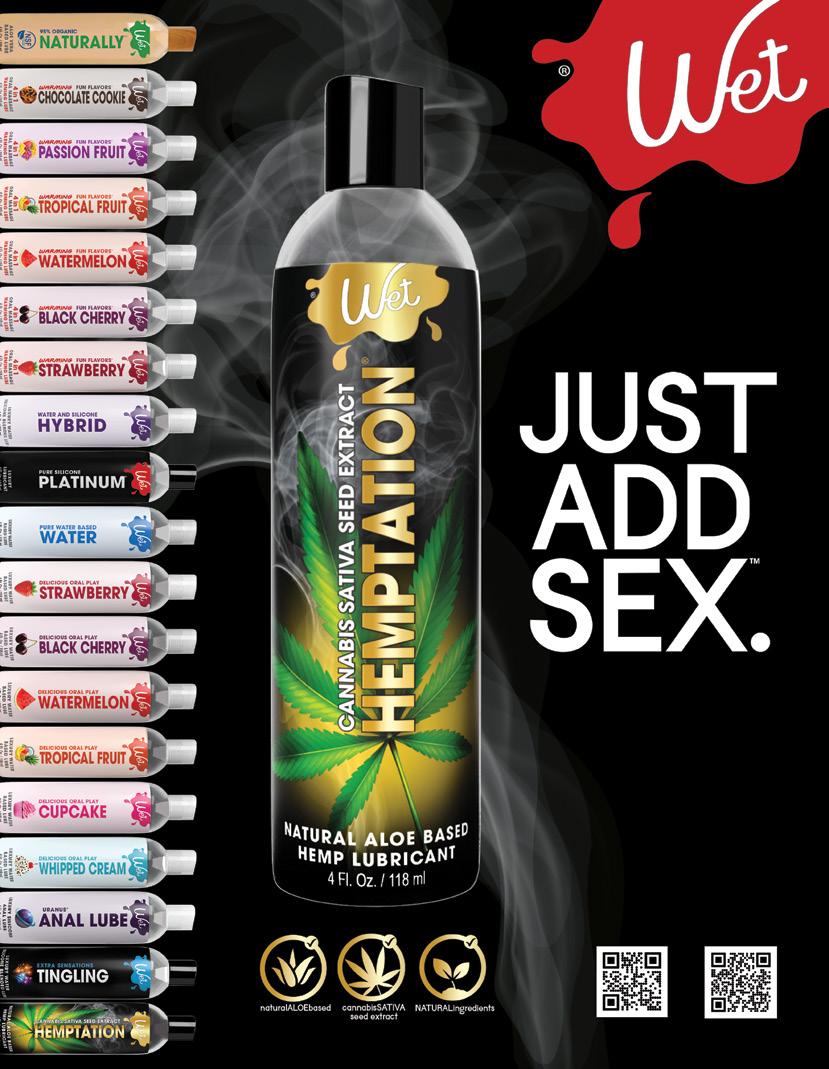






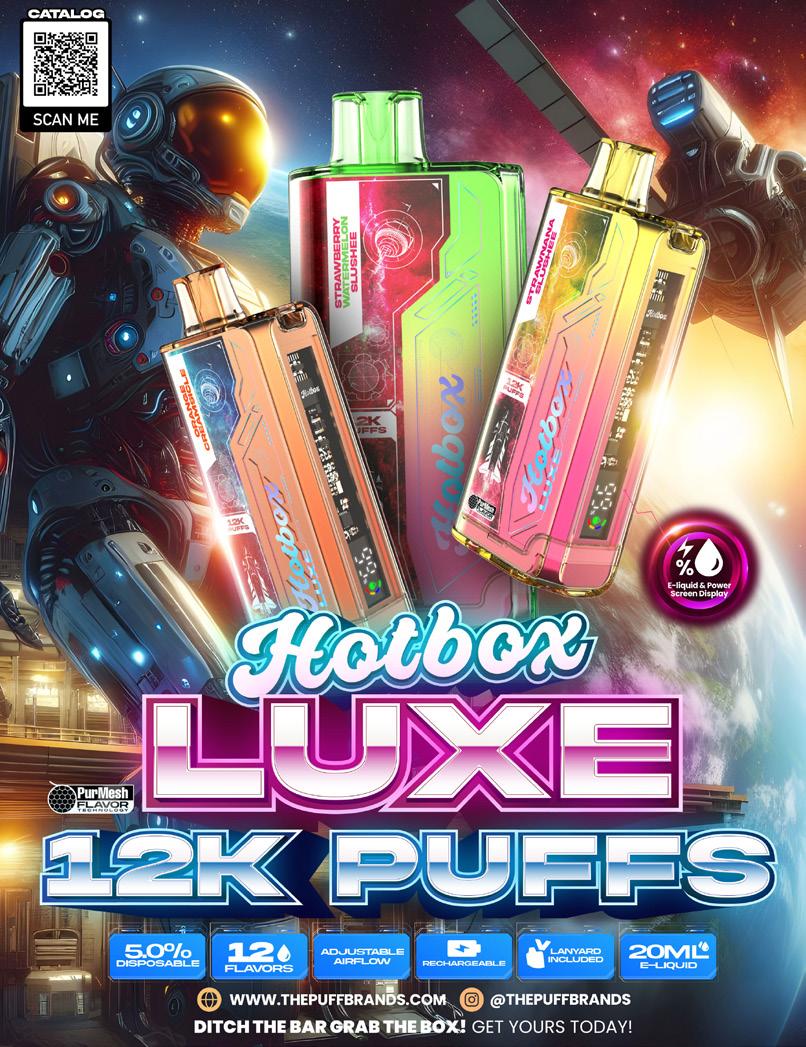


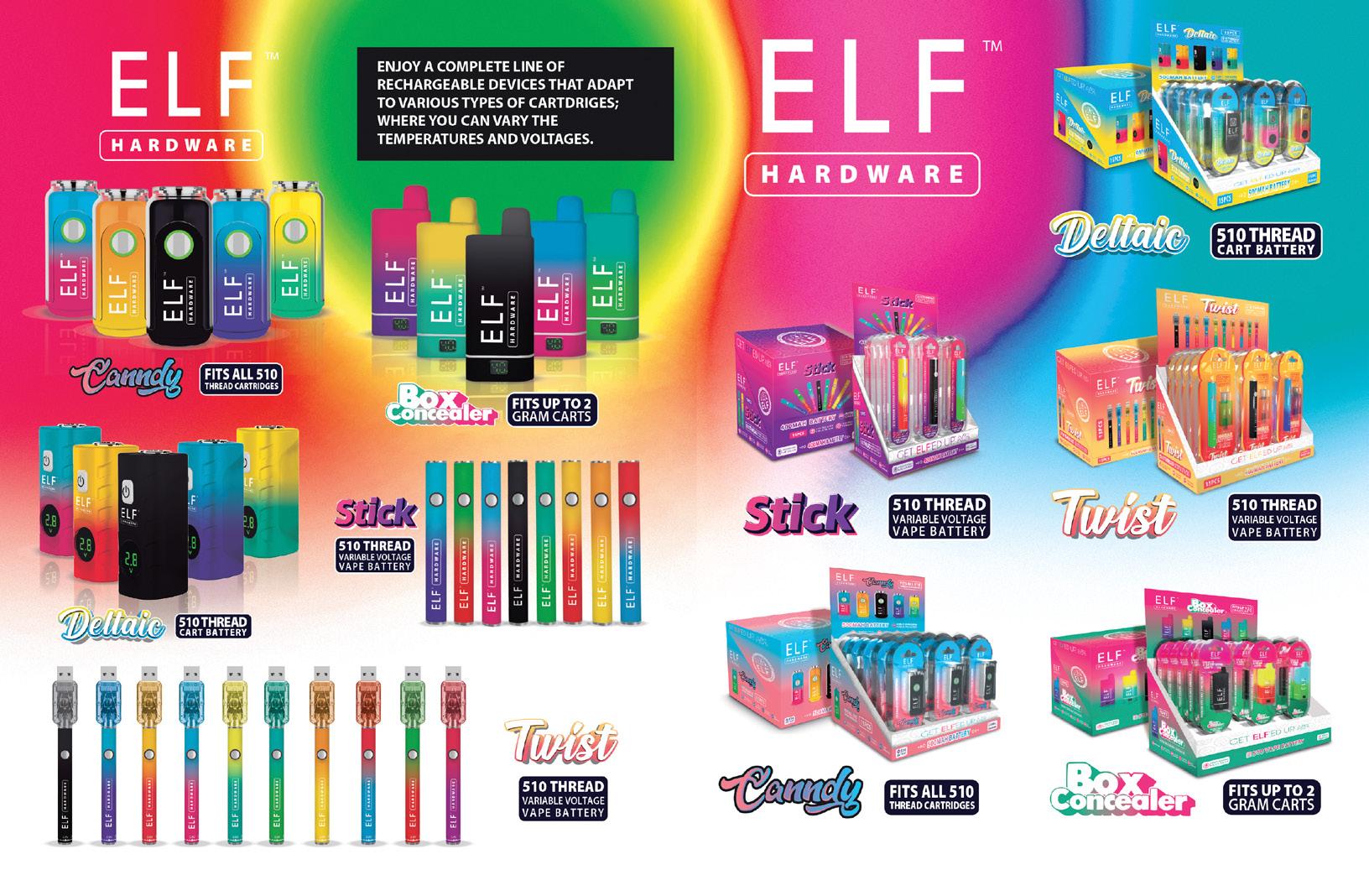






















 The collection honors our 144-year heritage, drawing inspiration from the historic artwork featured in our booklets and ads.
The collection honors our 144-year heritage, drawing inspiration from the historic artwork featured in our booklets and ads.


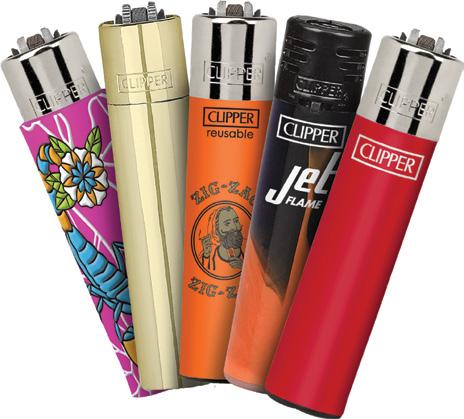





25 Magazine May 2024 Benefits of Clipper Lighters SCAN HERE TO VISIT OUR CUSTOMS ORDERING PAGE PLACE YOUR LOGO ON OUR TRULY REUSABLE LIGHTERS INTERESTED IN CUSTOM CLIPPERS? SIGN UP NOW TO GET 10% OFF YOUR FIRST ORDER: SAFETY REUSABILITY Iconic shape with a unique packing tool. Conveniently use the flint as a packing tool. UTILITY Premium quality & safety. Made with isobutane, one of the safest gases with low pressure and no bad odor. Give it unlimited lights. A truly reusable lighter. Reuse by refilling gas, replacing flint and sparkwheel. (sold separately)
post-primary edition ONE MINUTE STANDS


For When You Want to Read, But You’re Not in for the Committment



It’s official; the primaries are over, and the nominees have been selected. Your choice this year is a potentially senile old man who’s one sneeze away from a pair of Depends, and—well—a potentially senile old man who’s one sneeze away from a pair of Depends. Good job, America. Be that as it may, HQ’s political loyalties lie only with the needs and interests of the industry we serve. That being established, let’s look at the candidates through our lens and try to objectively pick apart their peppered histories on cannabis and the Drug War.
biden trump
Early Career: Helps write punitive drug legislation and supports increased drug-related incarceration as a senator.
1984-1986: Collaborates on the Comprehensive Control Act and the Anti-Drug Abuse Act, which impose strict drug penalties and introduce the concept of mandatory minimum sentences.
1988: Works on the Anti-Drug Abuse Act, setting up the Office of National Drug Control Policy.
1989: Criticizes President George H.W. Bush’s Drug War for not being tough enough, advocating for harsher measures and more resources for law enforcement.
1994: Writes the Violent Crime Control and Law Enforcement Act, contributing to a significant expansion of the federal prison system.
2003: Sponsors the RAVE Act, targeting drug offenses at music events.
2008: Supports reducing sentences for crack cocaine and later, in the same year, acknowledges the issues with his past criminal justice stances.
February 2021: Announces intentions for cannabis decriminalization and expungement of past convictions.
May 2021: DEA approves new cannabis research facilities.
October 6, 2022: Issues a mass pardon for past federal cannabis possession convictions, calls for governors to do the same at the state level, and initiates a review of marijuana’s Schedule I classification.
March 7, 2024: During his State of the Union address, reaffirms his commitment to reforming marijuana laws by expunging convictions for possession and reviewing the federal classification of marijuana, emphasizing that no one should be incarcerated for possession alone.
1990 – The Miami Herald: At a newspaper-hosted luncheon, decries the Drug War as a “joke” and argued the only way to win was to legalize all drugs.
June 23, 2015 – C-SPAN: Criticizes Colorado’s legalization of recreational marijuana as “bad,” but is strongly in favor of medical marijuana, highlighting states’ rights.
October 29, 2015 – The Washington Post: Argues for state-level marijuana legalization decisions and supports medical marijuana, noting Colorado’s challenges with legalization.
February 12, 2016 – Fox News: Notes problems with marijuana in Colorado, is wary of recreational use but supports medical marijuana.
2016 – Campaign Position: Endorses states’ rights regarding marijuana legalization.
February 2017 – White House Press: Spicer indicates potential for increased federal enforcement against recreational marijuana while acknowledging medical benefits.
May 2017 – Presidential Statement: Appropriations bill statement hints he might disregard the Rohrabacher–Blumenauer amendment.
January 2018 – Federal Policy: The Cole Memorandum is rescinded, emphasizing a federal prohibition enforcement stance. Also in January, a recording was leaked of Trump suggesting that marijuana makes people “lose IQ points,” while at an opioid summit.
June 2018 – Policy Stance: “Probably” supports the STATES Act but takes no action, leading to continued uncertainty.
March 19, 2018 – Public Speech: Suggests the death penalty for drug dealers as a strong response to drug crimes.
censored Smoke Signals 26 Magazine May 2024




Apix Glass | @apixdesign | www.apixdesign.com
What the Hell, Colorado?
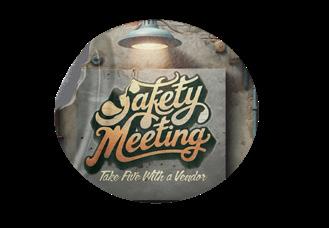 By Sofia Noillif
By Sofia Noillif
Ladders vs. Rockets
A Few Words With Durity Distro’s CEO
This month, we’re sitting down with Drake Fischer, industry veteran and founder of Durity Distro. Enjoy.
Let’s start with a quick rundown on how you got involved in the smoke and kratom world.
It appears that the latest assault on the cannabis industry is coming from Colorado, of all places. The Rocky Mountain State’s SB24-158, sponsored by Democrats Hansen, Michaelson Jenet, and Lukens, mandates immediate removal of any online promotion of substances deemed illicit, including legal marijuana. Taking heavy criticism for potential free speech infringement, the bill, part of a larger internet policy reform, will require social media platforms to update and publish policies by 2025, aligning with state content regulations. At press time, the bill is scheduled for discussion in the Senate Business, Labor, and Technology Committee. Whether it will pass is anyone’s guess at this point. However, if does pass the legislature, it’s hard to imagine Governor Jared Polis, a longtime proponent of legal cannabis, would sign the bill into law.
Read More:

Around 2011-2012, I started working for a out in Idaho. They carried everything; herbal incense, kratom, male enhancement, some products like Rush and a few others. My boss took me to my first trade show, which I think was ASD, and then I attended Champs for the first time three months later. I’ve been in the industry ever since. I’ve kind of done a little bit of everything, from E-Liquid to kratom. I’ve been doing kratom for a while and helped build some of the biggest national brands that are out there. We also have retail stores. I started the first one in 2015 and we’ve grown that to five retail stores, plus the wholesale.
Corrections, Retractions, Etc.
In a recent article, we inaccurately stated that Jesce Horton is associated with Columbia University and currently heads two nonprofits. We would like to correct these errors:
The correct a liation is with Cornell University, not Columbia University.
While Jesce Horton founded two nonprofits, they are now led by other individuals.
We apologize for these inaccuracies and are committed to providing correct information to our readers.

What was your position when you started?
I started out as just a sales associate and then I think within three or four months, I was managing. I hired my two best friends, one of them who’s now on our sales team. He just came back into the industry about three months ago. Then, obviously there was the legal stuff—I ended up going to prison for a while. I did around five years in total. You guys did an article about me. I was your Shop of the Month a couple of years ago.
OK, wow. So let’s put this in perspective. You started in this space around 2012. In the middle of that, you had to give close to a nickel to Uncle Sam—and somehow, in that time, you went from sales associate to national distributor with five stores?
(Laughs) Yeah, we service somewhere around 650+ smoke shops. We’ve got the kratom brand, the disposable brand, and we’ve got three or four new brands that we’re getting ready to drop here in the nest two years that we’re just doing a bunch of backend stuff on. So yeah, a little bit of everything.
You didn’t climb a ladder. You took a f-cking rocket, dude.
Yeah, it’s pretty crazy. I started my first store in 2015 and got my second in 2019. …We started the wholesale business in my mom’s garage in April of 2020. Within 24 months we were doing around seven or eight million a year. Last year, with all the businesses combined, we did just under 25 million.
What’s your advice to aspiring entrepreneurs in the space? One sentence.
Continued on Page 28


27 Magazine May 2024
Setback in Florida
In Florida’s legislature, Senate Bill 1698, targeting hemp-derived products containing Delta-8 and Delta-10 THC, has passed the House with a 64-48 vote and now awaits Governor Ron DeSantis’ signature. Initially receiving unanimous Senate approval, the bill aims to ban a range of products, including gummies, tinctures, and vapes. The legislation would also restrict other cannabinoids, such as THCV and THCP, in hemp extracts and set a limit on Delta-9 THC products to 5 milligrams per serving or 50 milligrams per package. Advocates for hemp-derived lowdose THC products and business owners have voiced concerns, suggesting the bill could undermine the hemp industry while favoring the medical marijuana sector. This development comes as Florida voters anticipate a November ballot decision on adultuse legalization, pending a Florida Supreme Court decision on a related challenge. The state could join at least 18 others with varying restrictions on Delta-8. There is a mounting campaign to pressure DeSantis to veto the bill, but given his track record on the subject, no one is holding their breath. By press time, there’s a very good chance that Florida’s hemp market will be limited to state-compliant Delta-9 products.


Blumenaur Spits Truth
U.S. Rep. Earl Blumenauer might be drifting toward retirement, but he’s not going quietly. Just at press time, he criticized the Biden administration for not ending marijuana prohibition, labeling it “political malpractice.” At a House committee hearing, Blumenauer conveyed frustration at the delays in the DEA’s review of cannabis scheduling, supported by remarks from Vice President Harris. Health Secretary Xavier Becerra responded, noting that while HHS has recommended rescheduling cannabis, the final decision rests with the DEA. The congressman urged immediate action, emphasizing the potential benefits of cannabis research and the public’s growing demand for legalization.
Trade Show Roundup
CHAMPS Trade Shows
Atlatic City, NJ
ACCC
May 7-9, 2024
AltPro Houston, TX

Read More:

George R. Brown
Convention Center
June 20-22, 2024
Safety Meeting (Cont.)
Follow your heart and protect your energy. Very well put. You guys carry a ton of SKUs. Which ones are your house brands?
So, we’re a regional distributor for MIT 45, and then we have around 15 or 20 other brands. We carry Krave, K-Tropix, Lit Culture, Hush—a lot of the biggest brands in the kratom space. But we own Mit Therapy and Vital Elements Kratom. That’s us. Those two brands we manufacture in our facility in Boise. And we have the big boy machines; the CFM 2000, the automated bagging machines, the ISO 9000 clean room and all that fun equipment.
Let’s talk about Seth for a minute—your Creative Director who was the main subject of our feature on Durity. A few people got the idea he had developed your branding. I’m sure Seth doesn’t want that. Can you clarify his role?
We just make sure everyone on the team gets their due. I’ve had four or
five graphic designers that have worked on differing things. I’ve had Mit Therapy since before Seth even worked for me. So, he’s been able to come in, adopt our style and our brand and run with it as we come out with new products—and that’s what makes him such a good designer. He can figure out what our customers want, what his boss needs and what the brand needs and take it from there . . . Seth’s a rock star. We have 3,500
ANME Burbank, CA
Los Angeles Marriott Burbank Airport
July 15-17, 2024
ASD Market Week
Summer Show
August 4-7, 2024
Las Vegas, NV
LVCC
SKUs and Seth makes ads for basically all of those brands.
What do you see on the horizon for kratom, with all the legal and regulatory developments taking place?
Well, the FDA just released a report that stated . . . that kratom was tolerable all doses. In subjects taking up to 12 grams at once, the worst they were experiencing was nausea—and you have to understand that 12 grams . . . is an insane amount of kratom at one time, so I think that’s really good for us. So, at the fall conference . . . the FDA is going to come out with some more stuff, which is going to allow for federally funded testing to on kratom to take place, and that should really open the doors for further regulation to come down the pipeline, which is probably good for the industry.
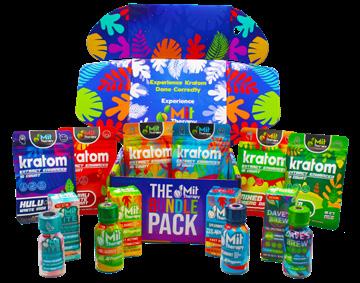

Read More:
Smoke Signals 28 Magazine May 2024





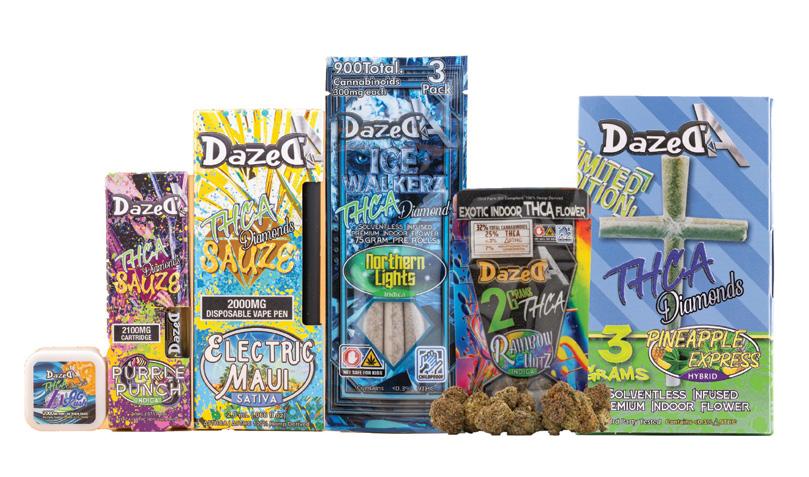
30 Magazine May 2024 Product Offerings sales@dazed8.com dazed8.com 2000MG • DAB LA OG Kush • Rose Gold Runtz • Maui Wowie 2100MG • CARTRIDGE Purple Punch • Ghost Train • Cali Gas 2000MG • DISPOSABLE Electric Maui • Liberty Haze • Godfather OG • Alien Mintz .75G • 3PK PRE ROLLS Northern Lights • Blue Dream • Lime Skunk 2G • FLOWER Rainbow Untz • OG Kush • Sour Diesel 3G • CROSS PRE ROLL Pineapple Express





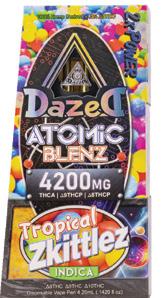

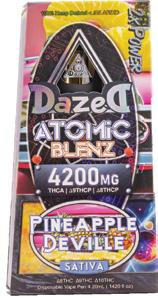


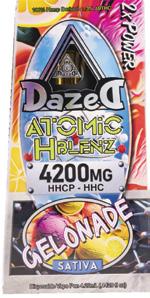
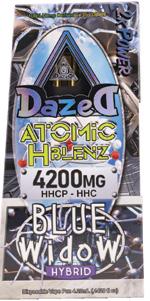


4.20G NIMBUZ Disposable FEATURES 2x Drag Power Dual Airflow & Heating Element Available in 3 Strains Single Chamber XL Battery Power Consistent Taste every drag sales@dazed8.com dazed8.com





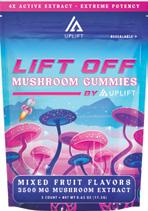







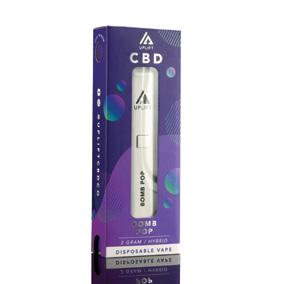
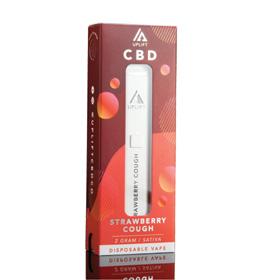
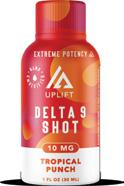






33 Magazine May 2024


 By David Pogge
By David Pogge
There’s a commonly held myth that the casinos in Las Vegas pump extra oxygen into the common areas. As the story goes, increased oxygen levels keep patrons awake and more energetic, thereby encouraging them to spend more. It’s understandable why anyone would want to believe this. Conspiracy theories are fun, and by comparison to the vast majority of them, this one is particularly harmless. I’ve never bothered to fact check the claim until now, and part of me wishes I hadn’t. I’m at least grateful I waited until after the dual events this article is serving to recap. When working an event of this magnitude and dynamism, it’s best to accept every advantage—even if it’s a placebo.

from my perspective as I fought those crowds while hauling camera and lighting equipment from booth to booth, putting in my best effort to adequately cover an event



This year’s planned convergence of Total Product Expo (TPE) and Glass Vegas took up the better part of a million square feet of event space, every inch buzzing with commerce. Of course, the two-in-one event saw an ebb and flow of attendees like any other, but at its peaks, traversing its corridors of entrepreneurs and artisans wasn’t too far off from the ducking and dodging of festival-goers fighting their way to the front row of the headlining performance.

whose activity would require an army of photographers. We didn’t take an official poll, so I can’t speak of the shows’ success in hard numbers and figures, but my interactions with the vendors told me what I needed to know. I’ve seen the demeanors of distributors after a show proves to be a bust. Hell, I’ve been that vendor before. That is not what I witnessed here. Instead, I saw satisfaction. These were vendors who had made the right bet and were happy with their investment. Considering the massive booths and displays that obviously spared no expense, such success was no small feat.



Trade Shows 36 Magazine May 2024
My first TPE was in 2023, and from my perspective, there was legitimately no comparison between the two years. To be clear, there was very little, if anything, to criticize about my first experience. The organizers run an incredibly professional event; the staff is sharp and helpful, the afterparties dwarf those of any of other shows I’ve attended, and every inch of the convention hall is covered in carpet. For anyone who has paced the floors of less welcoming exhibits, you know the luxury of having this plush comfort underfoot.
Despite this, I couldn’t help but walk away from my first experience feeling like something was missing. It was hard to put my finger on at first, but it finally dawned on me after months of contemplation. TPE




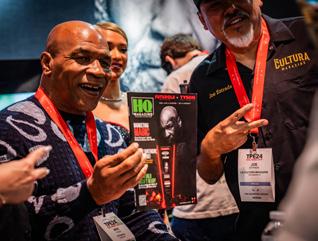
Enter Glass Vegas. By floorspace, this show, dedicated to the finest independent art the counterculture has to offer, was barely one-third the size of TPE, but the heart and soul it gifted this well-oiled Tinman was an incalculable benefit. Comparing the larger of the two events to this character is in no way meant as a slight; keep in mind, he was a hero of the story. TPE is an incredible event that for years, has been well worth attending—and the same can be said for Glass Vegas. But the convergence of these two unique, but complementary events created nothing less than perfection.
Here’s to hoping the symbiosis continues.


is big business—and that is something this space desperately needs. But largely missing among its teeming corridors of towering booths and electrifying displays were the scrappy misfits who made this industry what it was before mainstream America found legitimacy in our trade; the artists, artisans and inventors happily living a hand-to-mouth existence off the fruit of what their hands could create and their minds, conceive. Of course, there were exceptions, but I’m speaking in broad strokes.
Glass Art Credits
1. Hicdogg/Joe Romatowski collab. 2. Luckie Glass. 3. Orphan Glass. 4 & 5. Shayla Windstar/Hicdogg Collab. 6. Homeblown Glass. 7.Antho Glass 8. Carpentry by @treezus_heist, display glass unkown. 9. Know Ego Glass. 10 & 11. Maxed Out Glass. 12 & 13. Wasatch Glass. 14. Ryan C.; showcased at the booth of Tortuga Glass Productions. 15. Crux Glass.
Note: If you see any attributions we got wrong, please notify us by emailing info@headquest.com. Also, please be nice about it. We took close to 1,000 photos. Keeping those straight wasn’t easy.
Pictorial continued on Page 40
1
37 Magazine May 2024

















The Glass Vegas team is thankful to all buyers, sponsors, artists, vendors, sta , friends, and family for what was the most epic glass art show yet . . . it was awesome to have TPE under the same roof, which helped bring even more success to everyone in the industry. The success of this show and the industry is because of each and every one of you coming together and uplifting the passion, success, spirit, and energy of the entire glass culture.

GLASS VEGAS




 -Amy Short, Director & Tradeshow Manger, Glass Vegas
-Amy Short, Director & Tradeshow Manger, Glass Vegas













Pictorial continued on Page 42 2 3 4 5 6 8 1 9 10 12 13 11 7 14 15 Trade Shows 40 Magazine May 2024



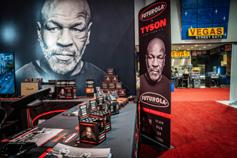

















TPE24 was an absolute blast, and we couldn’t have done it without our fantastic attendees, exhibitors, and sponsors who made it all happen! Huge thanks to everyone who joined in the fun. Mark your calendars because TPE25 is going to be even better! Same place, same awesome vibes, January 29-31. See you there!

TOTAL PRODUCT EXPO



 -Dawn Conger, Sr. Sales & Development Manager, TPE
-Dawn Conger, Sr. Sales & Development Manager, TPE



Trade Shows 42 Magazine May 2024



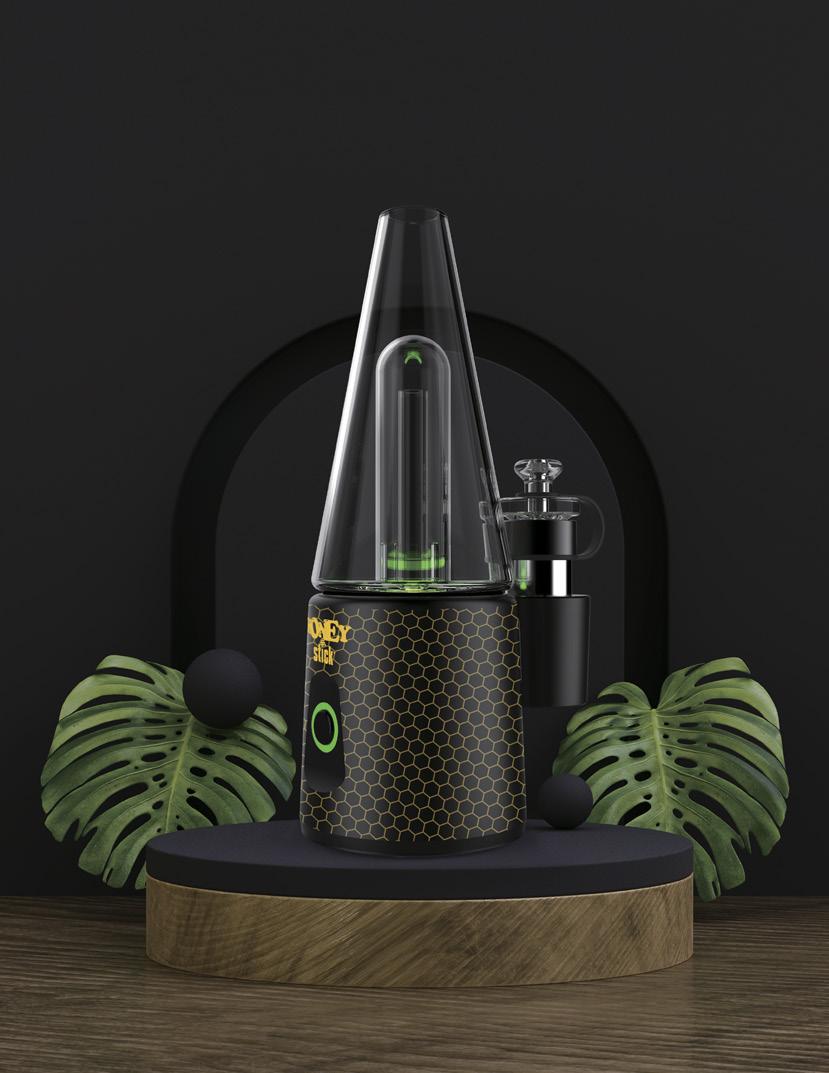















POWER PLANT
Sharon Letts: Harvesting Health
By Rudy Carrillo

A bout a quarter of the way through the 21st century, just as spring was starting to come out greenly and the mulberry trees were bursting with buds in these parts, I talked to renowned author, documentarian, television producer, and plant guru, Sharon Letts. To get in touch we used some sort of interwebz video conferencing technology that beats the hell out of the aspirational ATT videophones imagined in 2001 A Space Odyssey.
The only reason that’s worth mentioning is because essentially Letts is a flower child of the sixties who came of age in the 1970s. By the age of 24, she was a professional gardener. Her life philosophy echoes a time when sustainable holistic living—when being in touch with the earth—was a big deal, something that was really possible.
The time reference also speaks to Lett’s resilience. She’s a survivor. She’s been cancer-free for over a decade now. And that survivability, that endurance has everything to do with the time it takes to embrace the Earth, its plants, and in particular, members of the genus Cannabis. “It’s really a good story,” she told me, “I used to joke that God took this woman with a television voice and gave her cancer and then dropped her in Humboldt County.” Lett went from designing gardens for privileged Californios to public access tv
Women in Cannabis May 2024 Magazine 48
Photo credit: Josh Fogel
“It was like divine intervention. That night, I didn’t need any pain medicine, I didn’t take anything to help me sleep. I was a fifty-two-year-old woman with multiple, serious health problems. But cannabis is a superfood. It righted everything.”

and onto regional acclaim as a television producer before she landed in print in Eureka at the Times-Standard with a unique media perspective and a potentially deadly cancer diagnosis in 2012.
This is how that story goes: an expert on plants, Letts embraced the medicinal power of cannabis through a group called the “Bud Sisters,” where Pearl Moon introduced her to Rick Simpson Oil, an event that was like a revelation to the mainstream reporter: “How could I not know about this? I’m in the media!” she recalled thinking at the time. Facing a serious form of breast cancer, she felt she had few good choices. She tried the oil. “It was like divine intervention. That night, I didn’t need any pain medicine, I didn’t take anything to help me sleep. I was a fifty-twoyear-old woman with multiple, serious health problems.
But cannabis is a superfood. It righted everything.” Within weeks, Sharon was in complete remission, “the tumor literally disappeared,” she remembers. The rest, including books, media influence, and continued research, is history.
As the new year begins to bloom, Letts is busy with new projects, including writing, research, and further educational journeys into the healthful power of plants.
It turns out Letts has been living down south for the past dozen or so years, in Baja California Sur, in a sleepy town where a palm-fringed river flows into the gulf of California. The town is called Mulegé and about 4000 souls live and thrive there.
In case you want to know, Letts is living in a veritable holy land; a peninsula, bounded by a wide placid sea to the east, and over the highlands to the west, the nearly endless Pacific Ocean. This portion of Baja California is known for its biological diversity, filled with an astonishing variety of plant and animal life. It’s the perfect place for Sharon Letts to be right now. For instance, Letts says Mulegé is a wonderful place to write about the superfood that saved her life, revealing that she’s working on “a feature on superfoods that features cannabis as a very important superfood. I’ll be doing that as a feature for HeadQuest next month and that’s notable because I want to get the story out there, the story about plants as superfoods and how cannabis fits into that life-sustaining profile.”
When talking about plants and their importance to life on earth, Letts emphasizes the role of cannabis as a superfood, telling everyone that needs to know exactly how and why plants, and in particular, this plant we call marijuana can make a difference: “Any beneficial plant that has biochemical compounds that address our biological systems in healthful way can eventually restore and maintain health.” Further, Sharon advocates consuming the entire plant, not just the leaves and flowers, saying that, “With cannabis, with any beneficial plant, the whole plant, even the roots, are important. I’d like to think that cannabis was my ‘gateway drug’ to a wide spectrum of other beneficial plants.”
May 2024 Magazine 49
Lett’s recent research on beneficial plants and their healing biochemical compounds includes testing noncannabis plants as well, she continued, describing how “I took five of my top beneficial plants, not including cannabis, and broke them down by terpenes, and looked at the effects of those terpenes compared them to the terpenes that occur in certain cannabis strains.
Many people don’t realize that the same
relationship over the decades. People eat an apple, or some cannabis flowers and they don’t realize what those compounds do for them. I think the best outcome for my project is to teach people about the relationship we have with plants and how we need them to be healthy.”
With cannabis, with any beneficial plant, the whole plant, even the roots, are important. I’d like to think that cannabis was my ‘gateway drug’ to a wide spectrum of other beneficial plants.
beneficial compounds found in cannabis are in other beneficial plants, in produce, in fruits and vegetables!”
Letts fears that this knowledge about plants, about what the earth offers naturally in the way of healing foods, has been lost, telling us that, “We’ve been taken so far from the garden. People barely know how to make their own food, let alone grow it. There’s a huge learning curve ahead of us. I think, with cannabis, that the realization of its medical value over the past few decades has brought plants, gardens and sustainability back into the cultural consciousness. But when they told us to eat our fruits and vegetables way back when, they should have scared the shit out of us, told us that it was a matter of life and death. Because it is.”
Sharon argues that a sustainable culture requires healthy people to keep moving forward. Beneficial plants, especially cannabis, can be part of a real future featuring transformed lives and culture, concluding that “the crux of my work over the years has been to help people understand the symbiotic relationship we have with plants, how we’ve lost knowledge about that
Of course, there’s nothing imaginary in the earthly space that Letts envisions, but it’s something we can all aspire to, the plant guru believes. There are practical steps people can take to rejoin with nature to reinvest themselves in the idea of the earth as a holy and beneficial place, says Sharon.
“Add more plants to your diet,” she exhorts us, before closing out the interview. “And not just vegetables, but herbs too. Oregano and thyme have a 96 percent success rate as anti-cancer agents. They kill cancer cells in laboratory studies. Chamomile has a 93 percent success rate when used to treat cancer. It’s not just cannabis, but the acceptance of cannabis for its medicinal value has changed the entire dynamic. This is a huge thing. The Earth is a huge thing; sustaining healthy life, embracing plants for their healing power … is a big part of that infinite picture.”




 Photo credit: Lidia Ochoa, taken at Sue Carlton’s Familia Rancheria, High Sierras, California
Photo credit: Lidia Ochoa, taken at Sue Carlton’s Familia Rancheria, High Sierras, California
Women in Cannabis May 2024 Magazine 50
Photo credit: Josh Fogel











WWW.SKEYEWHOLESALE.COM 1.866.470.8806 Shop 24/7, with real-time inventory updates, on our website! NEARLY 10,000 PRODUCTS! SAME DAY SHIPPING ON MOST ORDERS! this joke is about incense. it's a slow burner. Skeye Wholesale is your INCENSE Supply Leader! All your favorite smells and burners in ONE place!
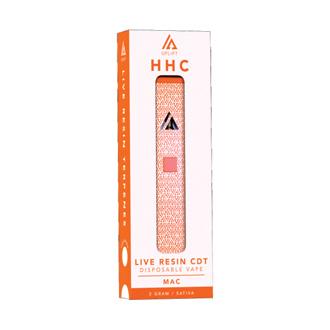





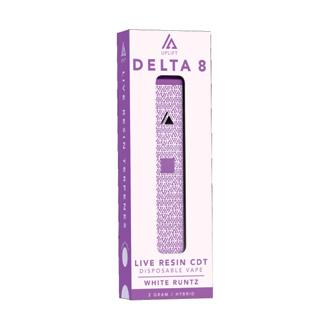






phreshpicks.com | 1-833-2phresh
Branden Bushnell: Blowing Glass, Spreading Love
UNCONVENTIONAL HUMANITARIAN HUMAN THE
By Ryan Mills
In the shadowy, mist-veiled corners of Washington state, just down the road from the iconic setting of David Lynch’s Twin Peaks, a glassblower is up at 5 a.m. making breakfast for his town’s unhoused population in the coldweather shelter that he runs. His playlist gently crescendos over the hours, waking the inhabitants to the smell of bacon and pancakes. It’s near freezing outside, and the place is full. Branden Bushnell didn’t intend on ending up here, but he is so glad he did.
“It was one solo Thanksgiving four years ago. I was in Tacoma, Washington, at the time and most of my family was back East and I just decided, fuck it,” Bushnell said. “I made a huge dinner and threw it, along with a folding table and chairs, in the back of my truck and went to this gas station around the corner from my house. I sat down and had a meal with the homeless who hung out around there. And that was it; I was hooked.”
The next four years after that first Thanksgiving saw Bushnell altering course so that he could fulfill what is clearly a life calling. He moved out of Tacoma to the small
Continued on Page 56



The Green Room 54 Magazine May 2024









55 Magazine May 2024
town of Sultan, Washington, and from that point forward, every time he made soup, he made 10 quarts of the stuff – which evolved into twoto-three times each week. Every time a person’s shelter/tent was destroyed, he bought them two as a replacement. To avoid any questions or hassles from the city, he applied for a food handling card so that he could distribute his soupfilled mason jars in relative peace. During that time, he was able to ascertain what people needed just from hanging out with them.
windows in his Volkswagen Bug) kept the meals at temperature. This, along with a five-gallon water cooler full of hot water, enabled Bushnell to drive around town and offer anyone a hot meal with a cup of tea, hot chocolate, coffee, or whatever it is they wanted.
I made a huge dinner and threw it, along with a folding table and chairs, in the back of my truck and went to this gas station around the corner from my house. I sat down and had a meal with the homeless who hung out around there. And that was it; I was hooked.
“I kept a notebook of what people needed and would pop into the secondhand stores and pick up what I could to pass out,” Bushnell continued. “Some of this would make its way to Facebook and people began donating, just to be kind, not

because I had asked for anything. All of a sudden, every winter I had about $5000 in donations on my hands, so I felt like I needed to step up my game. I felt like I had this responsibility because people were investing so much and believed in what I was doing.”
The local food bank provided the ingredients, and mason jars of soup became full meals that were kept in the back of his Xterra in the largest marine-grade cooler he could find. A cigarette lighter-powered electric heater (exactly like the one he had previously used to defrost the
As mobile as this was, “It was like herding cats,” Bushnell continued (affectionately). “A lot of times, I would make 20 meals and only be able to find/hand out two. It was then I realized the local Boys and Girls

Club had this huge building dedicated to just showers. They agreed to let me use it every Monday and Wednesday for the outreach I was doing. Now all of a sudden I had a guaranteed location where I knew I could find folks and provide food and supplies –we were even able to source a mobile dentist and doctor every month. And that’s when everything gelled.”
Combining Art, Entrepreneurship and Activism
This work doesn’t call to everyone, but it calls to Branden Bushnell so
loudly that he has constructed his life in such a way as to be able to do the most good. These days, that looks like living in an intentional, off-grid and not-for-profit collective he cofounded with fellow creatives called QuestLine. After Covid, Bushnell bought an RV for its flexibility and adaptability and has it parked on the collective in order to minimize living expenses. This out of the box approach has enabled Bushnell to level up his efforts. If the marine-grade cooler and shower days were where it all gelled, this is how it’s now fully baked.
“My work as a glassblower will continue there in a 40ft shipping container turned studio, in which the nonprofit will pay me basically an hourly wage – half of which can be funneled directly into homelessness relief efforts,” Bushnell continued.

Half. He is a glass blowing artist by trade, and a humanitarian by calling. One who has adopted a lifestyle of simplicity and resourcefulness propelled by a desire to allocate resources to a greater cause. It’s a unique, practical and impactful approach to a complicated problem and one that showcases how entrepreneurial ventures can serve as platforms for social change. To be clear, it’s tough work – work for which not everyone is cut out. Very few people will choose to pace the shelter aisles doing breath checks, worrying about what fentanyl is doing to the people he’s trying to help.
Continued on Page 60 The Green Room 56 Magazine May 2024
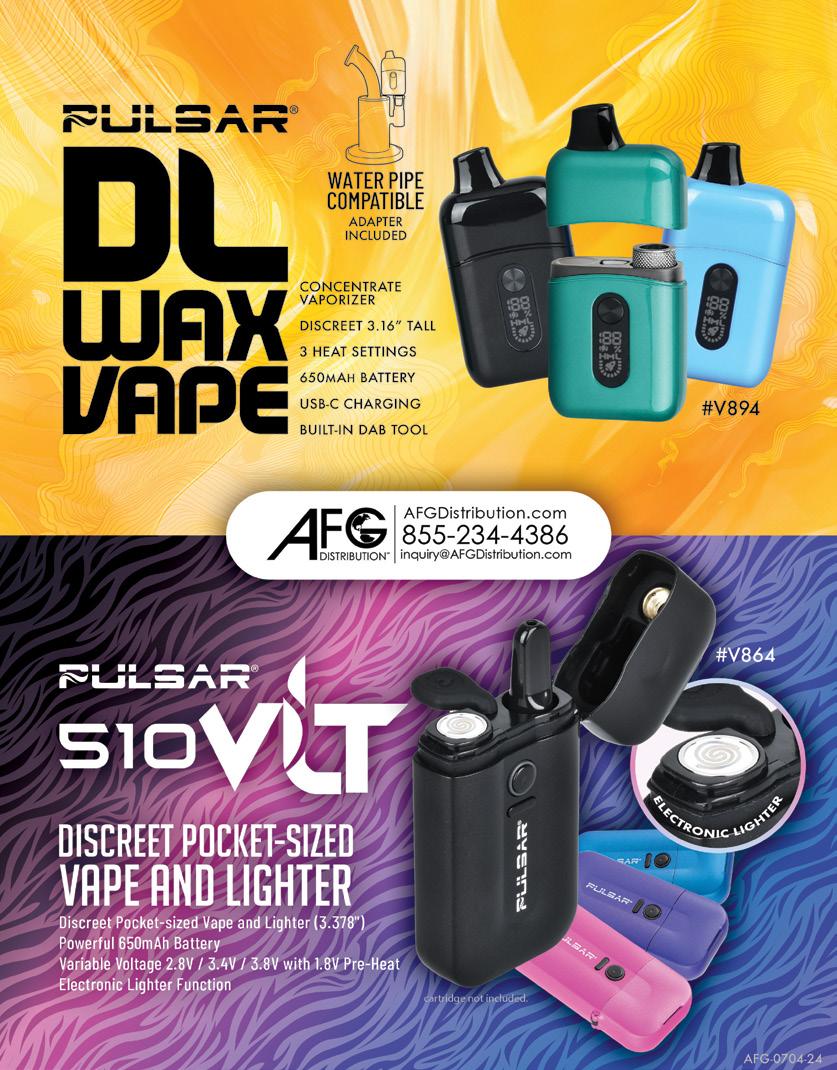


“Right now, it’s like sweeping water uphill,” he said. However stacked the odds may seem, in this rainy corner of the world, Bushnell has become a lighthouse. He has been able to navigate the unexpected twists and turns of the unhoused reality, driven compassionately ahead blending a unique combination of entrepreneurship with a deep commitment to societal welfare.





My work as a glassblower will continue there in a 40ft shipping container turned studio, in which the nonprofit will pay me basically an hourly wage – half of which can be funneled directly into homelessness relief e orts.





Scan here to donate to Branden’s ongoing efforts.

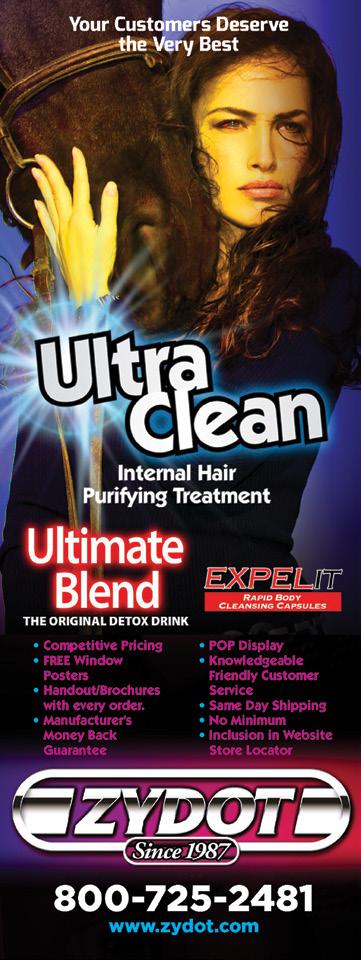
The Green Room 60 Magazine May 2024





















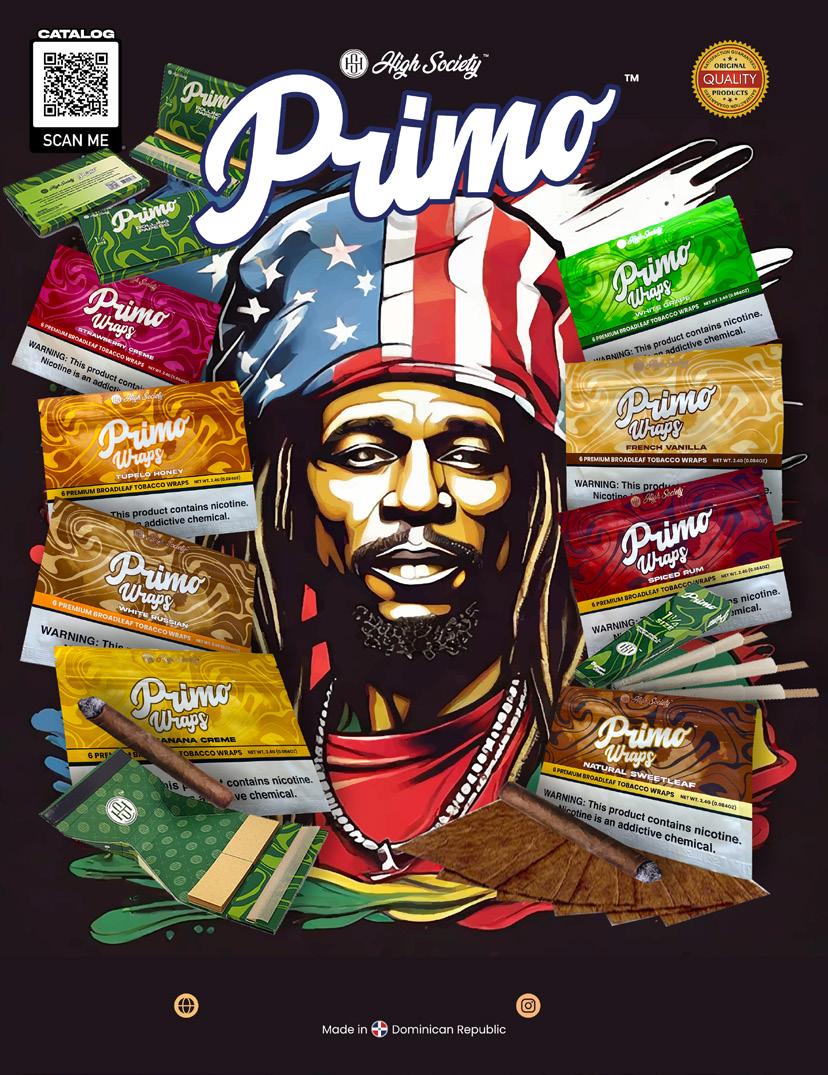



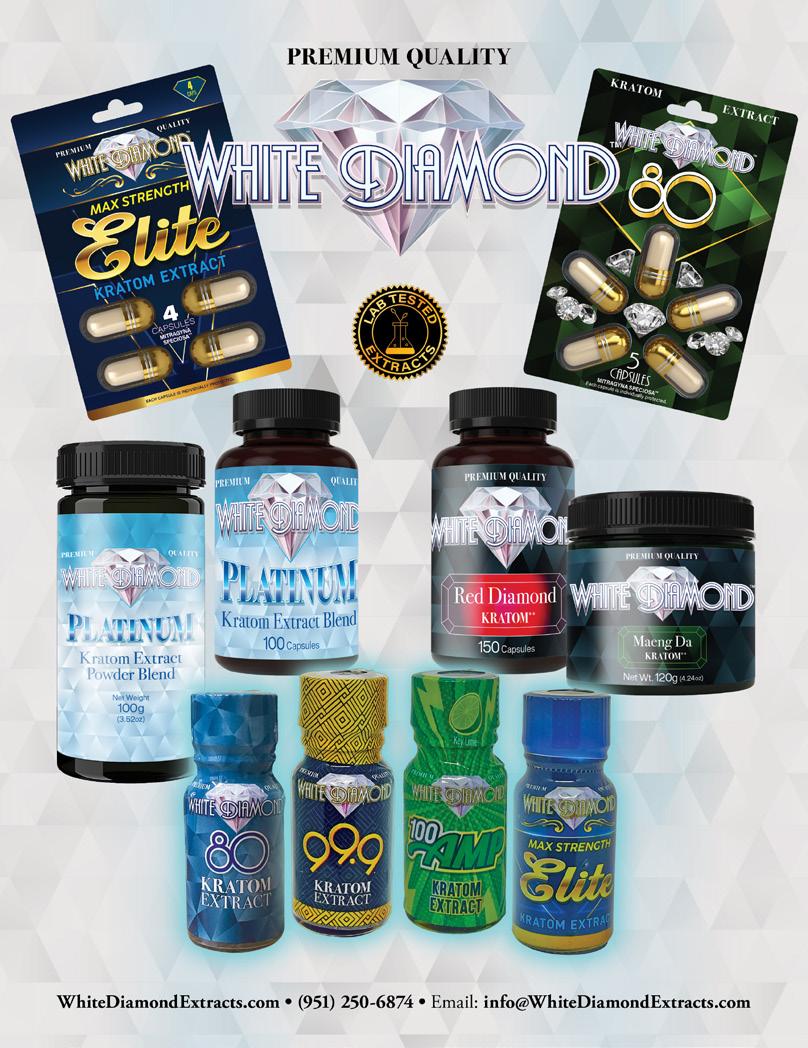


















West Coast Gifts: Deadhead Dreams, Stoner Schemes, & a Deceptively Boring Name
 By Matt Weeks
By Matt Weeks
When the first glass pipe from GEAR Premium officially licensed by the Grateful Dead hits shelves this month, it will mark a complete circle in Howard Franklin’s career.
It was either that or work in a mall with a suit and tie for the rest of my life. And that was not my jam. I needed to go join the circus and be on tour.
The founder of North America’s largest glass pipe designer, manufacturer, and distributor learned how to create colorchanging bongs while following the Dead. Thirty years later, he’s a part of their business.
It’s the kind of career arc that doesn’t seem possible. But for a teenage jam band fan, it was the only option available.
“It was either that or work in a mall with a suit and tie for the rest of my life,” Howard recalls. “And that was not my jam. I needed to go join the circus and be on tour.”
Humble Origins
Howard’s business started with two crucial moments. The first was fated. He never had dreams of blowing intricate glass pieces. He just happened to meet a man who knew how to make pipes that would change color as they were used.
The second part was ingenious.
On his own, Howard could create only a few pipes at a time. So, he taught the technique to his
road mates. They started a little company, blowing glass in the slow time between shows.
At first, they sold their wares to other Deadheads at the shows. But as their inventory piled up, Howard had a flash of inspiration. He decided he could sell excess inventory to local head shops. There were no grandiose dreams of a counter-cultural business empire. He just wanted to finance the next leg of the tour.
But being early to market isn’t a guarantee of immediate success.
Like a Chameleon
Color-changing glass derives its magic from a thin layer of transparent metal that is fumed into the glass, the reflections of which interact with light and the accumulating residue from use, creating the illusion of shifting hues. The work is common now, but in the mid-90s, it was NextGen technology—and many retailers didn’t believe their customers would pay early-adopter prices for it.
“At that time, you could get an acrylic pipe for 25 or 30 bucks,” Howard explains, “so they didn’t understand why someone would spend more on a glass pipe that’s going to break.”
Continued on Page 70 Heads of Industry 68 Magazine May 2024

BORN OF THE DEAD

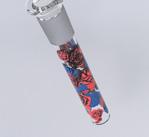

69 Magazine May 2024
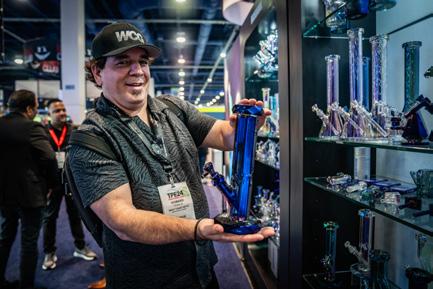
Unable to make an outright sale, he convinced a few shop owners to sell his pieces on consignment, hoping he could collect payment when the tour rolled back through town. He’d get orders for more before the circus had even pulled up stakes.
The process kept repeating. He’d leave a few samples with incredulous shop owners, who would always call back to beg for more pipes. Eventually, Howard figured out what was happening. His team didn’t just make and sell pipes; they pioneered a targeted guerilla marketing campaign.
“I was traveling across country and I’m at all these Dead shows, so we’re kind of educating everybody on what the glass is and what it does just by being in the parking lots and selling there. So, the Deadheads knew what was up, and they educated the head shop owners,” he said. “Or, if Deadheads actually were the head shop owners, they would educate the customers on what was cool and what was new. It’s all mainstream now, but it really started at these little head shops.”
When Legends Die
For a while, life was good. Howard scratched out a living while following the Dead. A simple existence,
perhaps, but it’s all he’d asked for. There was the occasional trip back to Indiana to take a few shifts at his family’s jewelry store, but most of his time was spent surfing from town to town on a wake of good music and better vibes.
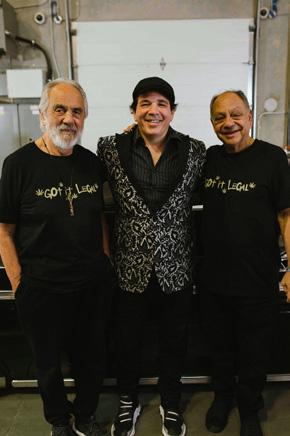
Then Jerry died, and everything changed.
The band took a break from touring together, which sent Deadheads scattering across the country. Howard ended up in Humboldt County, California, where he built up his business into a respectable endeavor. Chameleon Glass company trafficked in Americanmade, color-changing glass pipes. Howard may not have realized the enormity of his contribution at the time, but with Chameleon, a company born simply out of his disdain for the status quo, he had built a countercultural institution that has now endured for three decades and counting.
But a relationship pulled him away. In 2001, Howard sold the company and set out for the wacky, but legendary Wreck Beach in British
Columbia, Canada, a generational haven for the dissidents, bohemians, and flower children.
“I liked Wreck Beach a lot. It used to remind me a lot of how a Dead parking lot used to be,” he said of the area. “You’d see people selling well before there were dispensaries. You could get weed brownies and weed cookies or chocolate-covered mushrooms. For a long time, it was ranked as one of the top 5 clothingoptional beaches in the world.”
Unfortunately, the Canadian financial system wasn’t as welcoming to Howard as the people he met at Wreck.
What’s in a name?
Shakespearean teenagers may not believe that names carry significance, but banks do. As soon as the button-down financiers
Heads of Industry 70 Magazine May 2024

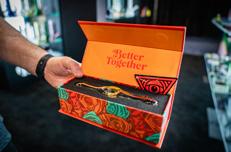

read the name “Red Eye Glass,” on Howard’s loan application, alarms blared. Even the most buttoneddown Canadian bankers got his drug reference.
Without a bank loan Howard couldn’t afford warehouse space, a fate worse than debt. But if borrowing money wasn’t an option, neither was giving up. So, he hatched a plan.
“I built a website. It was just candles and incense. And we changed our name to West Coast Gifts. Then the next bank we went to was like, ‘Yeah, we’ll give you the loan!’” he said. “It
was just a way for us to fly under the radar a little bit.”
Sure, his plan might be the corporate equivalent of telling the cops your name is “John Smith,” but it worked. He secured the loan, bought a warehouse, and started his second distribution company which designs, develops and distributes multiple brands, including Gear Premium Glass, which is doing collaborations with Creature Skateboards and The Grateful Dead. They also make Red Eye Glass and Red Eye Tek, the only officially licensed Cheech & Chong Glass.
He always had a plan to change the name to something more evocative, but as the years passed, the generic name stuck.
Years later, Howard thought he should change it. But his marketing team begged him to keep the old name. It’s not a name that sounds exciting—but it’s got a great story. And if there’s one thing that following the Dead should always lead to, it’s that.


71 Magazine May 2024





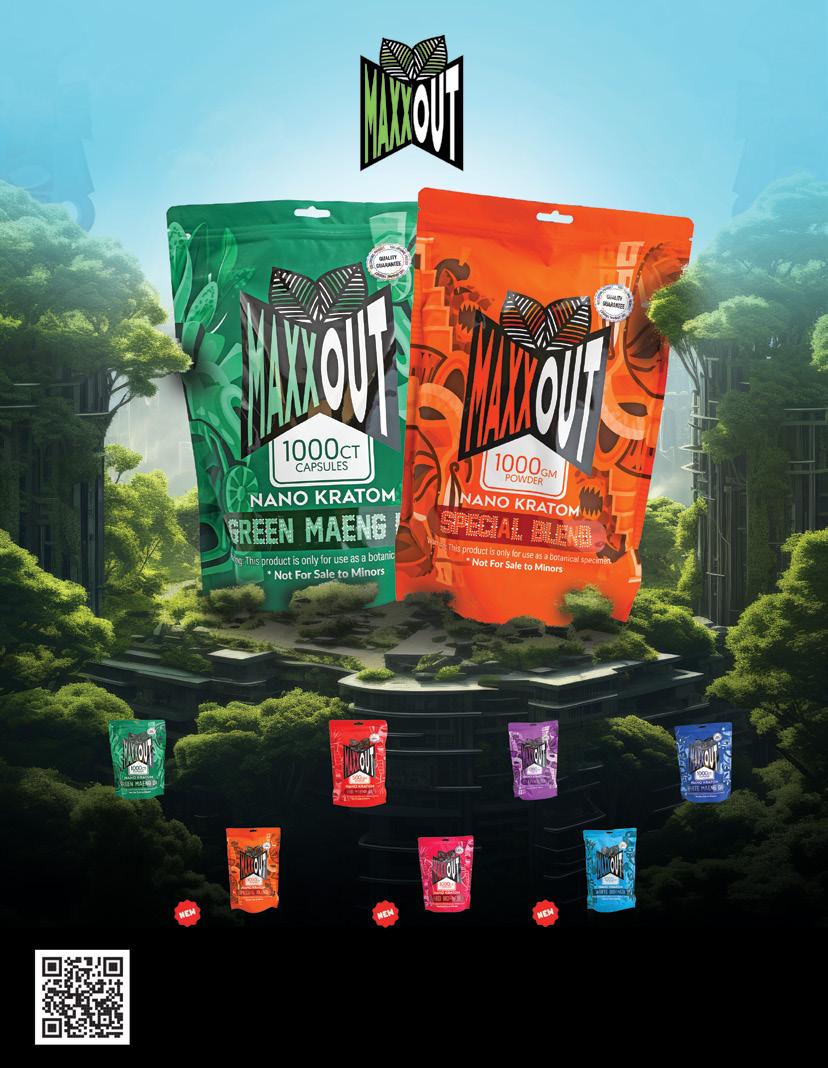







MORE THAN SEX PILLS
Extend Your Intimate O erings Beyond a Sti Night
By Kim Airs
One of my favorite things to do when writing about any aspect of the sexual health and wellness biz, sex toy biz, cannabis biz, or basically anything that involves adult pleasure, is the research I put into my articles before I start scribbling. Yeah, most of it draws from my three decades in the pleasure products industry but many times, I have to do the research snooping myself.
Go ahead. Twist my arm.
Recently, I’ve been on a reconnaissance mission to scope out the dispensaries and smoke shops in the Los Angeles area, where I live, to see who blends the pleasure product world into the world of smoke.

matter what retail industry you’re in. It seems that I ultimately have to wind up by the checkout counter, when I get the attention of a staffer who eventually comes to help me.
It’s then they usually ask if I’m looking for something in particular and I respond, somewhat flatly and surprisingly, “I’m looking to see if you carry any adult sex toys.” I often get
with having a little pleasure toy in their hands when those dick pills start to kick in? Yeah, you know what I’m talking about! Time to start carrying in a little sumthin’ sumthin’ for the other partner!
. . . do the math: if you’re selling dick pills, don’t you think there MIGHT be another partner involved in the high, who probably doesn’t own a dick?
I’ve been floored. It’s been many, many years that adult stores have incorporated smoke products into their retail offerings, with frequent success, but the other way around? Fuggetaboutit!
I’ll snoop around the store to see what they have in general, then try to shimmy out any kind of adult products among their shelves. I’ll keep making tracks around the store, often without a sales person asking any opening questions like “looking for anything in particular?” – you know, an opening line to begin a conversation that will ultimately culminate in a sale, no
raised brows of surprise, considering I’m not their usual, twenty something buyer. “Um, we don’t carry those, but you can go down the street…” and often, they’ll mention I should visit the local adult store.
But then again, what I often find is one product in the singular category of items that they think should cover that of adult retail. Can you guess what it is? Here you go: DICK PILLS! ‘But of course!’ I think! ‘That’s what defines a good time after partaking of the good herb!’
Now do the math: if you’re selling dick pills, don’t you think there MIGHT be another partner involved in the high, who probably doesn’t own a dick? Don’t you think that maybe someone else might have a good time
As I’ve mentioned in previous columns, you don’t need to stock an 8” silicone dildo or any fancy schmancy vibrator next to the dick pills at your checkout station. How about a few, small vibrating cockrings from Screaming O? Or a few cute bullet vibes from Maia Toys or Global, the latter with distinctive, pot leaf designs built right in? These products make for easy upsell items, especially when your customer’s already grabbing a pack of the stiffie stackers.
Imagine the pleasure and surprise when they come home to their partner with some new equipment to enhance the buzz and crank up the pleasure. And by offering these simple add on products, you don’t have to think about sending them somewhere else for these accoutrements; you’ll be their one stop shop for all their grown-up pleasures.
They’ll be your new repeat customer—and there’s nothing like customer who comes and then comes again—Promise!


After Hours 78 Magazine May 2024










79 Magazine May 2024
THONGS FOR YOUR

Male Power: Because Dudes Can be Sexy Too
By Matt Weeks
Sometimes it seems that every great story starts in the 70s.
The era of disco balls and bell bottoms gave birth to path-breaking businesses like Apple, Starbucks, Victoria’s Secret, FedEx, Home Depot—and Male Power. The men’s lingerie company emerged from a milieu of medallions and mutton chops, riding a wave of new thinking to find a new audience for a product previously seen as solely the province of women.

“My father was a visionary,” says Jeff Baker, the company’s CEO and son of the founder, Sam Baker (pictured far left in image below). “He was in neckwear. He was selling ties and sportswear but there was a falling out with his partner, and he decided to go in an innovative new direction.”
Seventies culture introduced a new kind of male sex appeal, with images of
“My father was trying to place the goods into men’s stores . . . we were doing trade shows, but then he went to a boutique show. They were different at that time. And while he was there, he realized that he really had a gay clientele,” Baker says. “We were very strong in New York City, Chicago, the big cities. Key West was huge for us. Fire Island was big. When we realized this was for gay men, my father decided

John McEnroe’s short shorts and Burt Reynold’s hairy chest dominating the airwaves. It seemed only natural that men would be interested in louder, brighter underwear.
But, at least initially, Male Power wasn’t the runaway hit the founder envisioned.
he could get a little edgier with the designs.”
The realization changed the identity of the company. Although he was heterosexual, Sam Baker was happy to serve the gay community. “He used to tell us, ‘You’ve got to think gay!’
After Hours 80 Magazine May 2024
when we were trying to come up with new ideas or designs. He was ahead of his time and never afraid to share his opinion,” his son says.
It was a mindset he never abandoned. Sam insisted on prioritizing gay clientele even as competitors rose up to corner the straight market. Outfits like Fashionable Male attempted to convince heterosexual men to buy more expensive, sexier underwear—to little success.
But Male Power held strong. They continued to bring innovative designs— crotchless underwear, strappy G strings, briefs with a zipper in the front—to the market, all made with soft-touch fabrics that wouldn’t cause discomfort to ruin the fun.
terms of the actual fit,” Jeff Baker says. “They weren’t putting the time and effort in, and that was an advantage to us because this was all we did. The picture sells a product initially, but for repeat business, it’s about the quality. So that was our advantage.”
Male Power’s attention to detail extended beyond the look, fit, and feel of the undergarments. The elder
another called Lucifer that are made from very unique fabrics. And we’re experimenting with new designs. We’re doing cut-outs and inserts.”
Jeff Baker is following in his father’s footsteps. He’s still going to trade shows (recently, visitors to cannabis mega-show CHAMPS could find him among the throng) and works to create new, innovative product lines for his clients.
. . . they weren’t putting the time and e ort in, and that was an advantage to us because this was all we did. The picture sells a product initially, but for repeat business, it’s about the quality.
Baker wanted his products to capture a fun and playful spirit. Most of the company’s products sport cheeky names—the Boulder Holder, the Moonshine, Your Lace or Mine, the Adonis, the Ramrod—that celebrate male sexuality.
Of course, the 70s are over and the modern man is more progressive and open to fashionable underwear. Today, Male Power is expanding its customer base, no matter what gender or orientation.
Baker puts it best: “We’re for everybody.”
“We were always known as a quality brand. For us, fit has always been very important. It was kind of shocking as some competitors entered the market and I think they were just clueless in
“We’re all about new fabrics, all softtouch fabrics, that provide a new look and a new feel,” Jeff said. “We have a line called Marble Mesh and








81 Magazine May 2024
THE PRICE OF PLEASURE
Paying the Tab When the Tab is Taboo
By Darin Burt
Advertising restrictions and rejections by merchant service providers are nothing new to retailers in this space. Given our culture’s historic propensity for puritanical hang-ups, it should come as no shock that the adult retail industry, representing products connected to personal pleasure, sexual health and wellness, would be faced with similar challenges. Even though both categories are gaining mainstream acceptance, long-held stigmas are still in place.
Natalie Annis, CEO and Founder of Like A Kitten and Natalie’s Toybox, offers insights into unique challenges and strategies to overcome operational obstacles during our candid conversation.
“There are a lot of pieces happening at the same time that are making it difficult to be in this industry,” Annis
asserts. “We talk a lot about being ‘fringe’ categories, and right now there is a pushback with political movements towards the more conservative side again.”
Annis highlights that although stores may legally sell adult products, they often face scrutiny from major credit card companies and processors, who consider such products a business risk they prefer to avoid.

masturbation, sexual health and wellness, it’s not a true risk issue,” she adds. “. . . that’s the morality police.”
“It’s a constant battle,” she says. “We were blacklisted (for selling sexual enhancement products) and put on a five-year registry so that no payment processor would take us.”
Business is business, as they say, and for better or worse, financial institutions often view “adult” as a “reputational risk,” fearing that supporting such
The topic should be as black and white as the previous quote suggests, but merchant service providers’ operations are far from straightforward. For providers like BankCard USA, which has been delivering solutions for high-risk merchant accounts since 1993, maintaining compliance and keeping pace shifting financial industry standards, all the while facilitating seamless transactions, is a balancing act.
“We see (adult products) as a sector that’s often misunderstood and underserved,” says Eric Andrade, a Merchant Relations Representative with BankCard USA. “There’s a lot of good business owners in this space, so we definitely want to cater to it.”
“Transparency is key on both ends,” Andrade says, underscoring the significance of accurately describing products and adhering to contractual guidelines
After Hours 82 Magazine May 2024

to minimize rejections. Questions like, “Is this something we can do? Is this something you guys would support?” highlight the crucial role of clear dialogue in avoiding interruptions.
Merchant Services aren’t the only hurdle for adult retailers; social media adds another layer of complexity.
Meta (formerly Facebook) has proven to be a frequent source of frustration for inconsistency in approving or rejecting ads for adult products. For example,
ads for women’s undergarments have been removed because the platform’s automated systems couldn’t distinguish between the color of the model’s skin and the color of the material, leading to mistaken flagging for nudity.
The Center for Intimacy Justice issued a report alleging discriminatory advertising practices by Meta, often favoring men over women and diverse genders, leading to the suspension of many advertising accounts. For instance, men’s underwear
“If they’re going to continue to vilify things like masturbation, sexual health and wellness, it’s not a true risk issue. That’s the morality police
Annis says. “It’s all tied to how society sees gender and sex, where it’s more okay to talk about male sexuality, but female sexuality still gets judged or seen as taboo.”
“We’re confronting this challenge on several fronts,” she adds. “We’re addressing gender issues, envisioning our future, and figuring out how to conduct business effectively today.”
—Natalie Annis, Like a Kitten/Natalie’s Toybox
In Meta’s defense, they assert that content flagging isn’t arbitrary,
but follows clear rules defining “adult content.” However, they acknowledge
83 Magazine May 2024
imperfections in their approval process due to reliance on artificial intelligence, which struggles with accurately interpreting context and nuances in the vast volume of ads. In response, Meta states that rejected ads are subject to human review upon resubmission, indicating ongoing efforts to improve the process.
Collaboration, Annis insists, is the pivot point to change. It won’t happen overnight, but by joining forces, the collective voice is more likely to be heard. Advocacy groups, like Pleasure Professional Place, on Facebook, which has nearly 4,000 members, are exceptional forums for discussing issues and solutions.“In the beginning, we did everything by trial and error,” admits Annis, reflecting on the start of her
reach out to that could help.”
We were dropped by four different payment processors and two insurance companies before I knew that there were people I could reach out to that could help.
—Natalie Annis, Like a Kitten/Natalie’s Toybox
business in 2018. “We were dropped by four different payment processors and two insurance companies before I knew that there were people I could
Mobius Pay, Maverick Payments, Worldpay, Platinum Solutions, and SecureGlobalPay are a few of the companies recommended as being adultfriendly. Retailers have also had success using a payment gateway service, like Authorize.net, that acts as a middleman in the transaction process.
For all the possibilities that exist for positive transformations in and around the adult retail industry, at present, doing business is about accepting — but challenging — the status quo. “If we have to operate within the constraints of advertising policies, then so be it. If it doesn’t work, we’ll tweak things until it does, finding creative solutions to get
our message across,” Annis says. “I truly believe in having these conversations, going as far as we can, and pushing forward for change.”


After Hours

Lovehoney Fresh Toy Cleaner
Smoke shop customers already know the importance of keeping their glass clean. Well, brace yourself, because this is going to blow your mind: same goes for sex toys. Yeah, we couldn’t believe it either. (Notice tone of heavy sarcasm.)
Worry not; Lovehoney has you covered with their Fresh Toy Cleaner Spray. Dare we call it the Formula 420 of pleasure pokers? Maybe. The Lovehoney Fresh Toy Cleaner Spray ensures your favorite toys stay clean and hygienic: Simply spritz before and after each use for peace of mind and hygienic fun-having.
The water-based formula is safe for all materials, from silicone to glass, and it’s vegan-friendly to boot; no honeybees or furry friends harmed here. With an easy-touse spray nozzle, application is a breeze –just spray, wash, rinse, and dry, and you’re ready for safe, healthy action. Available in 3.4 oz and 8.5 oz bottles—great for a cash register upsell and a must for swinger parties!
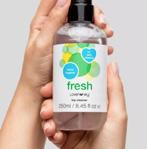
Orctan Oral Sex Simulator

When you imagine a ‘beejer’ machine, what comes to mind? A hulking mound of metal and plastic formed into the likeness of a pained, lifeless face?
Not so much. The Orctan Oral Sex Simulator is sleek, compact, and oozing with sex appeal. Forget about flattening your manhood between clunky rollers; the Orctan tantalizes with its soft silicone pieces, offering a teasing sensation that’s as close to the real thing as you can get.
“It started off as a nice massage and then I lost myself in it. If you close your eyes, it feels like a great blow job,” says one satisfied reviewer. Plus, for those who enjoy edging (delaying the big-O for more intense pleasure), simply push pause and keep that climax at bay.
Crafted from body-safe silicone and ABS plastic, this simulator boasts 9 massage settings and 3 power functions, ensuring there’s a mode for every mood. Quiet motors, one-hour rechargeable battery, and a realistic feel make the Orctan the ultimate companion for thrilling solo play.
Summer vibes impulse buys
intimate, playful products for your sensual customer


Sizzling Sellers
“F”
Functional
that Put the
in
Sexy,
Visit our retailer page love well, live well.




We’ve hacked our biorhythms to be fitter, happier, more productive, more accepting, slower to anger, and more confident. Ironically, all this big data has led us to be unhealthier, unhappier, and morally poorer than at any time in the past 50 years
Volume 2: Our Filtered Reality
By Matt Weeks
Author’s Note: This is the second part of HQ’s investigation into “What Do We Really Know?” Part I examined how our sense of reality gets warped by blatant lies from politicians, unverified media reports, and the looming threat of artificial intelligence. To get caught up, read it online at by scanning the QR.
Long Live the Simulation

You don’t need to believe we live in a computer-generated simulation to see that much of what governs our behavior is fake.
Take, for example, a mundane social media experience. Today, a beauty influencer can post a heavily edited picture of herself to Instagram, announce that she owes her youthful glow to a non-FDA-approved skin cream, and receive payment for her services in cryptocurrency. The closest thing to reality that occurs within this whole ordeal might be the hashtag #longhairdontcare.
But ask any targeted teen about the post’s veracity, and they’ll be quick to point out its artifice. At remarkably young ages, modern consumers understand the influencer’s tricks. They will tell you she was already beautiful before using the product, that she likely used flattering angles and “good lighting” to achieve her look, and that her image was almost certainly altered via a filter. In other words, if she’s selling a fantasy, nobody’s buying.
Yet the ad still works. It exploits insecurities and promises a solution so easy, so inexpensive that it sells. And sure, using digital touch-ups to sell snake oil isn’t new. But what’s singular about right now is almost everyone has the ability—and the desire—to recreate this charade.
Getting here
It wasn’t coincidental that Marvel executives pursued the idea of a “multiverse” as the followup story arc to the gigantically successful Avengers
Endgame run. Each one of us experiences the world through a unique social media feed. Watching our favorite characters experience a similar feeling through parallel dimensions spoke directly to our moment.
It’s also no surprise the multiverse idea failed. If there’s one side effect that living in separate universes has, it’s how makes us worse at understanding the world outside our screens.


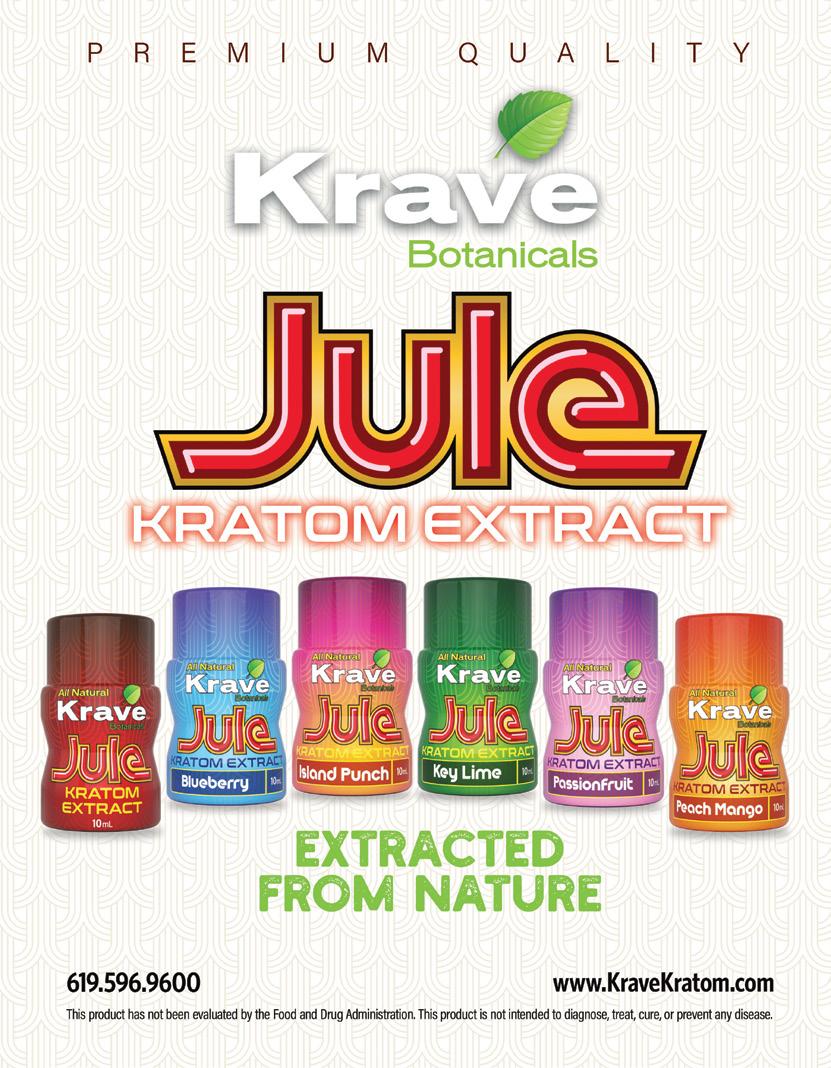
Head Space 90 Magazine May 2024


According to the recent research, Americans do not understand how their neighbors, friends, and coworkers actually live. Most college students believe their own drinking habits are responsible, while those of their peers are borderline problematic. Nearly all married couples tell surveys they have less sex than everyone else does. White collar workers grossly overestimate their coworkers’ salaries. And the sharpest investors often fall for the simplest scams (see: Theranos). Those teens who saw our imaginary Instagram ad? The Pew Research Center found the majority believe social media is a positive force in their lives, but terribly negative for others.
These trends aren’t new. But they have accelerated over the last decade, just as what Surgeon General Vivek Murthy calls the “epidemic of loneliness” has overtaken America. While it’s too simple to say we’ve become worse at understanding others because we spend less time together, it’s no doubt a factor.
Our Lady of Perpetual Happiness
Our society spends billions to optimize the human animal. New devices can tell us how much sleep to get, protein to eat, sex to have, and time to spend with friends. We’ve hacked our biorhythms to be fitter, happier, more productive, more accepting, slower to anger, and more confident. Ironically, all this big data has led us to be unhealthier, unhappier, and morally poorer than at any time in the past 50 years, according to 29 different measurements Gallup uses to survey Americans’ satisfaction.
Our progress toward bettering ourselves has moved us away from our goals. And it’s exactly this inability to understand ourselves that leads us to misconceive the wider world. Technology
has substituted easy answers to questions that should require difficult thought and personal reflection.
We’ve missed this because, as consumers, we’re conditioned to think about our role in Capitalism as consumers. But social media isn’t after our money. It is after our attention—and that changes everything.
James Williams, a former Google advertising strategist and author of “Stand Out of Our Light: Freedom and Resistance in the Attention Economy,” put it simply: “In the short term, the digital attention economy can distract us from doing the things we want to do. In the longer term, it can distract us from living the lives we want to live.”
Today, our information consumption resembles religion more than science. We no longer care about accuracy. We don’t demand facts. We give our attention over solely to flashy presentation.
With the dopamine shot of a funny video or ire-raising news story just a tap away, technology has scrambled the basic neural wiring that controls how we understand the world. Today, our information consumption resembles religion more than science. We no longer care about accuracy. We don’t demand facts. We give our attention over solely to flashy presentation. Here we are now, entertain us.
This is How We Deal With It
The basest and least effective way to steel yourself against the falsehoods that create much of our reality is through Cynicism. Championed in turns by toocool commenters and precocious high schoolers, Cynicism asks us

Head Space 92 Magazine May 2024




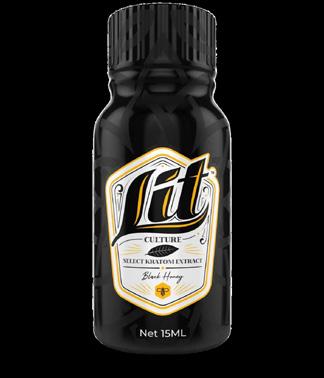



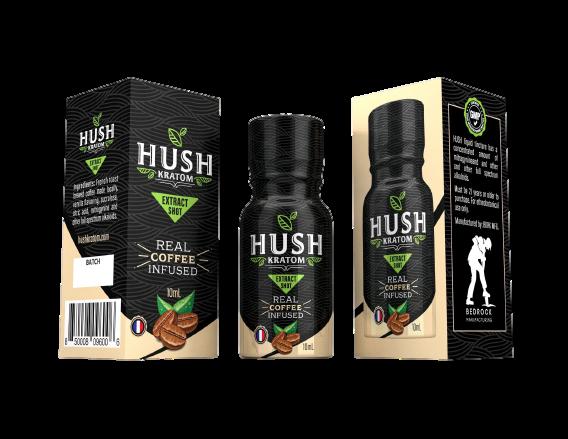

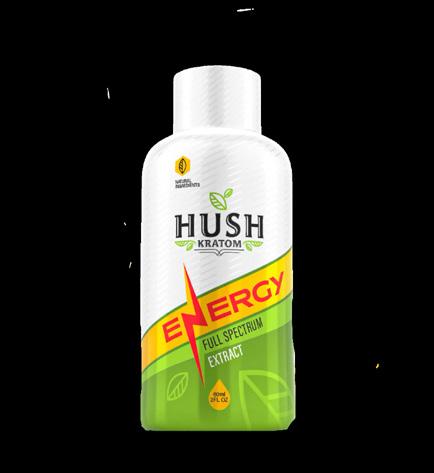


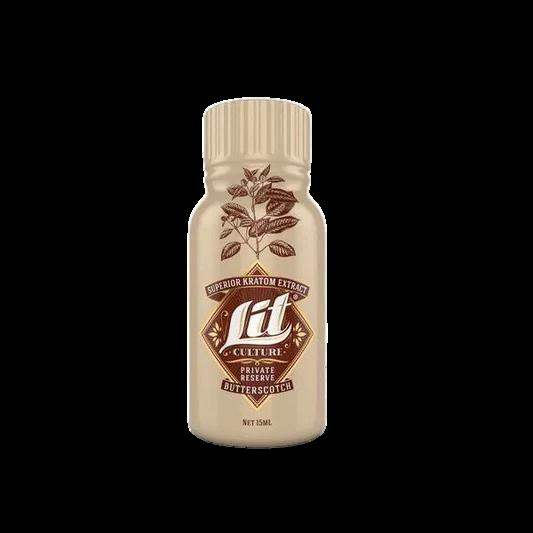
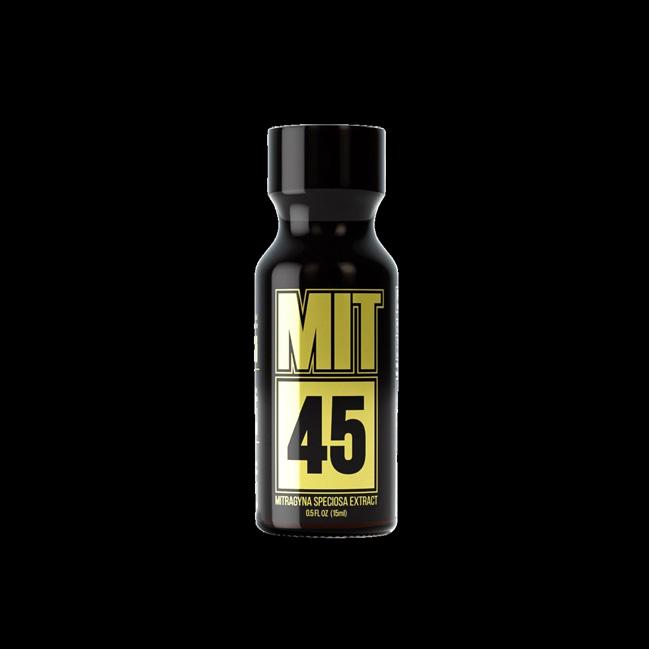
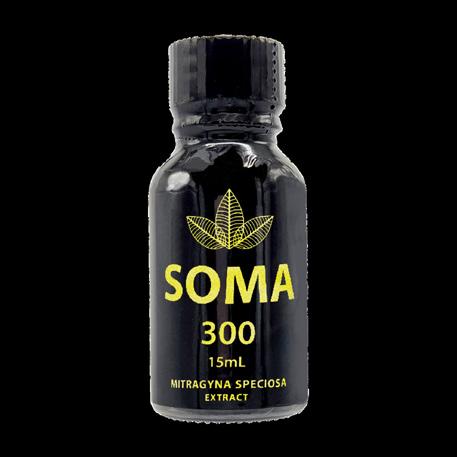


NEW WHOLESALE CUSTOMER RECEIVE 10% OFF ON FIRST PURCHASE BY MENTIONING THIS AD SHOP WHOLESALE PRICE NOW ORDERS@ANNBIZ.COM . 770 833 9497
. . . when we harness our own attention, we wrest back control of our modern currency, allowing us to make real choices and not merely take what the algorithm gives us.
to assume that lying is pro forma. The bullshit is baked into the cake— and always has been. Cynicism sees threats around every corner, but provides no useful way to deal with them.
The second way of coping with misinformation is Optimism, which requires one to believe everything will get better. Optimism is appealing, but naïve. And while it delivers personal psychological benefits (optimists are always found to be healthier, happier, and more successful than others), it provides little guidance for managing bad actors and assessing risk.
A more common answer is to take servings of these approaches buffetstyle. A scoop of Optimism for our families; a bowlful of Cynicism for our government. Even more common

is not to think about this at all, and check to see if you’ve missed anything interesting on your socials (hint: you haven’t.)
There is another tool that allows us to resist the deluge of tilted information. Unfortunately, it requires more work than either optimism or cynicism.
The Way Forward
The Science of Attention is a growing field of research that offers us as a bulwark against the agents of unreality. Its fundamental theory, born out through research, suggests that we can counteract the cognitive declines and emotional immaturity that a life of distractions thrusts upon us.

How? By being more deliberate in how we use technology. Limiting screen time, turning off notifications, leaving the phone at home, walking in nature, reading books. Breaking the habit of a quick glance at Facebook is, sadly, difficult. But research suggests this—and this alone—will finally makes us mentally fitter, happier, more productive. More than that, when we harness our own attention, we wrest back control of our modern currency, allowing us to make real choices and not merely take what the algorithm gives us.
The trick is learning how to apply the Science of Attention to our daily lives without falling into the trap of yet another gamified, tech-driven optimization scheme.

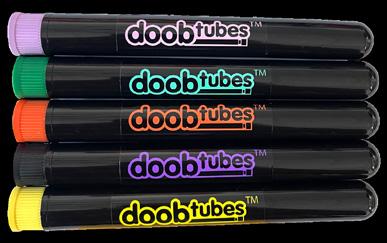

Head Space
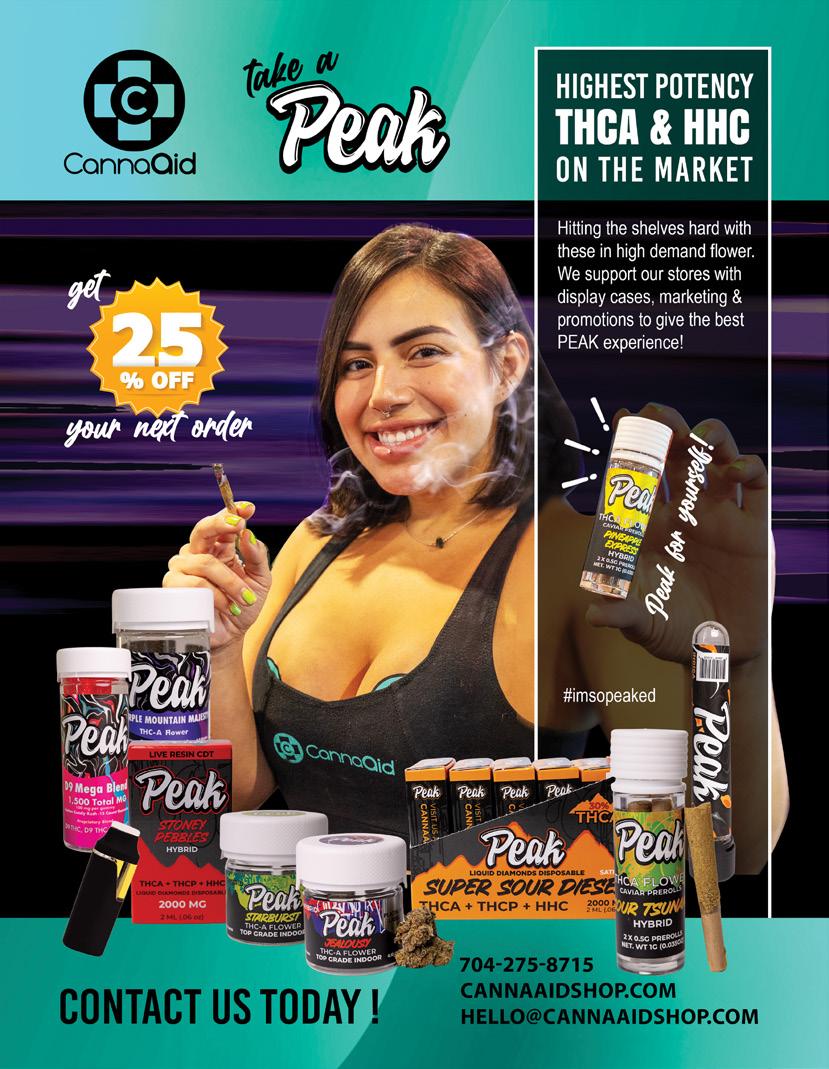
A NEW LEAF?
Despite Multiple Legal Setbacks, the Regulatory Tide May be Ready to Turn for Kratom
 By Rudy Carrillo
By Rudy Carrillo
Kratom. Even the name sounds otherworldly, almost magical if you let that long1 “a” sound linger on the tongue. And that’s part of the deal with this traditionally used yet now controversial plant product making the news in these parts, these days: consumers are fascinated with kratom. User reactions on Erowid, an internet compendium of consumer use and experimentation have recently included comments like, “Kratom helped me defeat my own personal issues that were a result of opiate addiction” and “[Kratom] provided me a wave of deep aesthetic pleasure beyond normal sensation.”
The dried leaves of the kratom plant have been used for centuries in Southeast Asian culture for their transcendent psychoactive properties, and since 1936 for medicinal and healing practices, according to the American Psychological Association. In reality, Mitragyna speciosa isn’t otherworldly at all. It’s very much of this Earth. It’s just another plant from the coffee family, after all, albeit a species with unique pain relieving, social interactionimproving, and even opioid withdrawal-easing effects.
And of course, when writers
resort to vernacular phrases like “these parts,” (see the first paragraph) it means they’re talking to a familiar audience: Here, we’re talking about kratom and smoke shop culture. We’re including attention to the consumers who’ve helped make kratom such a big deal. A key federal survey estimated that more than 1.7 million Americans used some form of kratom in 2021.
That sounds like the makings of a worthwhile relationship between the retail industry and the people it serves. But it’s more complicated than that. Kratom, though effective and pleasant enough in low doses, is said by its detractors to be dangerous when taken in high doses or in combination with other psychoactive substances or alcohol—and past anecdotal evidence has tended to agree. Such “evidence” has led to calls for a crackdown on the import of this herbal remedy, which in reality, is just a leaf from a tree. Currently, kratom import,* processing and sales are not regulated in America, though the industry’s chief lobbying arm maintains that sales of the herbal remedy amount to a billiondollar industry. The kratom business imports more than 2000 tons of leaves and plant
96 Magazine May 2024
Continued on Page 98 Head Space
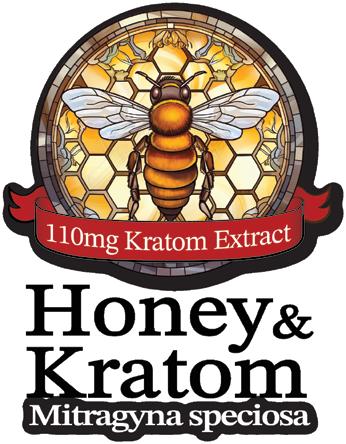

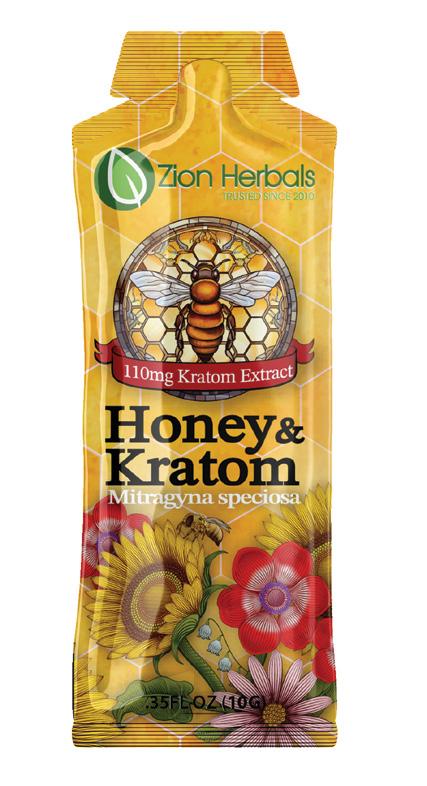

We acknowledge that for many, the “a’’ sound in “kratom” is a short sound. We also acknowledge that if we were being faithful to the original pronunciation, the word would more or less be pronounced “krah-TOHM.” That’s “ah” as in “ah shit, I mispronounced the word,” and “ohm” as in what you say when you sit in the lotus position at the end of your hot yoga class.
2clarification
The importation of kratom into the United States has been under heavy scrutiny by the FDA. In 2014, the FDA issued Import Alert 5415 which allows the agency to detain imported products that contain kratom. According to the FDA, there is inadequate information to provide reasonable assurance that kratom does not present a significant or unreasonable risk of illness or injury. Consequently, the agency has classified it as a new dietary ingredient with no history of use or evidence of safety. As of the latest update on the FDA’s website, this Import Alert is still active, which suggests that while kratom is not banned, its importation for human consumption is in limbo at best.
material into the USA on a monthly basis.
Those facts, about kratom’s usefulness and market potential, as well as the substance’s alleged dangers, have come up recently in mass-media reporting on the subject. Last summer, National Public Radio reported that “dozens of wrongful death lawsuits have been filed over the product and how it is marketed.” In recent court cases, both originating in the state of Florida, kratom was listed as a contributing cause of the death for at least two casual users of the plant, according to NPR reporter


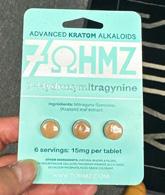
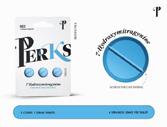
. . . don’t let that stu into that safe space. It’s going to do something bad.
Peter Haden.
As for the kratom industry itself, the American Kratom Association has been actively lobbying for a more truthful approach to the plant. Association lobbyist Mac Haddow went on the record recently, telling NPR, “The (wrongful death) case in Florida was egregious . . . It’s the poster child for why regulations need to be put into effect.” Such regulations would include better, more accurate labeling and dosage information for Kratomrelated products.
AKA maintains that it wants better regulation of its product, as long as federal regulations related to kratom import, use and production continue to fall under the aegis of the Food and Drug Administration, and that it’s categorized as an herbal supplement.
37-hydroxymitragynine, etc
Kratom contains several active alkaloids, the most prominent being mitragynine and 7-hydroxymitragynine. Mitragynine, the compound with which we are most familiar, typically makes up about 66% of the alkaloid content and is responsible for kratom’s stimulant and analgesic effects. 7-Hydroxymitragynine (AKA “7-OH”) is less abundant, roughly 0.05%, but is significantly more potent, contributing to pain relief and sedative effects. This secondary alkaloid binds much more strongly to the brain’s opioid receptors, which is linked to potential dangers such as the risk of addiction and the possibility of withdrawal symptoms. The alkaloid profile can influence kratom’s impact on mood, perception of pain, and potential for dependence and withdrawal symptoms. Other alkaloids include speciogynine, paynantheine, and speciociliatine, but their exact concentrations vary widely.
The death of Krystal Talavera of Boynton Beach, Florida, on a weekend in June of 2021 was ruled to be kratom-related. She had consumed a packet of powder containing a kratom concentrate labeled “Space Dust.” Had the product been properly labeled and its sale adequately regulated on the internet, Talavera’s death could have been avoided, industry advocates have argued in the press and on the AKA website.
But the association’s website goes further than merely supporting consumer use of kratom and assenting to the need for better labeling and sales practices; the site actively calls out the FDA for its efforts to do “everything it can do to interfere with the right of consumers to make informed choices about products they use for their health and well-being . . . and their war on kratom”
which AKA says “includes distributing disinformation on kratom that materially misleads consumers and policy makers.”
The FDA’s position, until very recently, has been clear. CBS news reporter Mark Strassman reported in December that the feds have been working to ban imports of kratom since 2014. This intractability seems to be evolving, though.
In part designed to protect consumers such as Krystal Talavera, the official government position on kratom reads, in part, “until the agency scientists can evaluate the safety and effectiveness of kratom (or its components) in the treatment of any medical conditions, FDA will continue to warn the public against the use of kratom for medical treatment. The agency will also continue
1editor’s note
Continued on Page 100 Head Space 98 Magazine May 2024

In a press release dated February 26, 2024, it has been noted that FDA Deputy Commissioner Kimberlee Trzeciak has signaled a ‘significant shift in FDA policy on kratom.’
to monitor emerging data trends to better understand the substance and its components.”
The focus on a ban and the lack of regulation of a product commonly sold under a variety of names and concentrations are at the heart of the issue, Haddow told CBS. “They simply say, ‘We’re not gonna regulate. We wanna ban it,’” he said. “They should be regulating and protecting consumers.”
Notably, Strassman’s reporting also revealed a key fact about the kratom industry: “The group’s spokesman, Mac Haddow, told CBS News that out of about 8,000 players in the kratom industry, only around ‘three dozen’ are legitimate.”
Certainly, such admissions require a second look at current regulatory efforts by the FDA. This could happen as FDA regulation ramps up based on scientific evidence of kratom’s usefulness. Despite the recent legal setbacks, there are signs that the tide is turning. In a press release dated February 26, 2024, it has been noted that FDA Deputy Commissioner Kimberlee Trzeciak has signaled a “significant shift in FDA policy on kratom.” This shift includes thinking about “what a regulatory framework” for kratom would look like, as well as increased efforts to work with Congress to ensure that all kratom products are “clearly labeled with all ingredients,” as well as a new, active investigation by FDA regulators of industry manufacturing and
production techniques.
In further developments related to the marketing of kratom and kratom products in the US, the AKA also released some policy briefs in addition to the February announcement referenced above. In these published findings, the AKA reiterated some very interesting facts and processes discovered by the federal government. These include a report on a recent “dose finding study,” on kratom, conducted under FDA auspices, which found no adverse events related to dosage. The document highlighting these findings also noted that some government scientists “were profoundly disappointed” in the initial results of the clinical study.
Despite the ostensibly negative attitude displayed by some within the regulatory status quo, officials at the FDA accepted the results and are making plans to make a public presentation on those results at a scientific conference happening in Fall 2024.
A second white paper published by AKA in the past month calls out hypocritical stances and tactics undertaken by the feds. Although the FDA and other agencies have repeatedly called for a ban on kratom, their tactics have been far from transparent, as the press release notes:
“The
FDA has repeatedly made claims over the past 12 years that kratom is a dangerous substance thatshould be classified as a Schedule I substance under

Continued on Page 102 Head Space 100 May 2024 Magazine

KRATOM

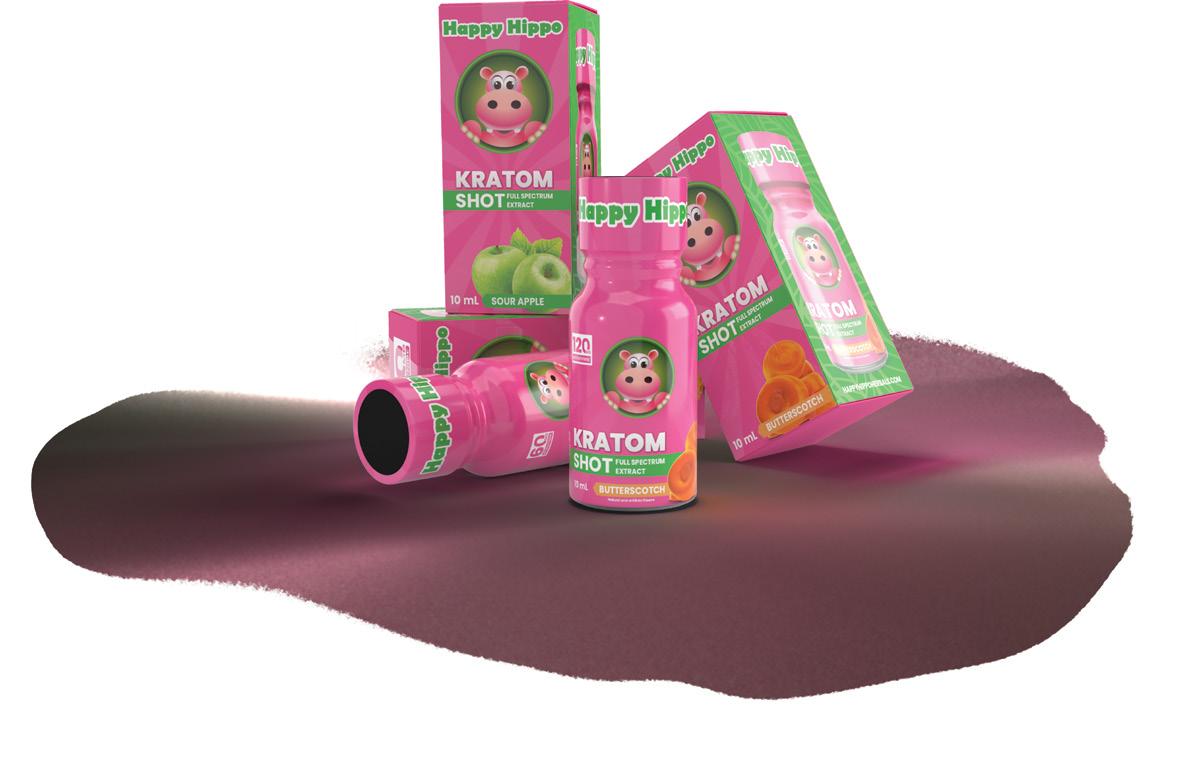
INCREASED PRODUCTIVITY
SUPER ENERGY
INCREASED FOCUS





SHOT KRATOM SHOT SHOT KRATOM KRATOM SHOT SHOT
KRATOM KRATOM
BUTTERSCOTCH SOUR APPLE ORDER TODAY! sales@happyhippoherbals.com (208) 995-4200

. . . we’re at this stage now where it could go to a federal level, where, with further testing, it could be classified as a regulated dietary supplement.
the federal Controlled Substances Act (“CSA”). Yet, when called by a Federal Judge to present witnesses and testimony under oath in a case in the Southern District of California at a Hearing on February 8, 2024, on whether kratom is dangerous, the FDA refused to attend the Hearing or even provide under oath any documents or testimony to the Court. The explanation provided by the U.S. Attorney to the Court explaining the FDA’s decision stated the following: They [FDA] have refused to provide us with witnesses or documents to support our position . . . The reason they gave was that they have not yet made a determination regarding whether kratom is dangerous.”
To get a clearer idea of concepts related to kratom’s safety, as well as issues surrounding issues such as kratom concentrates and product labeling, we had a conversation with a noted industry insider who has been working with the kratom industry for well over a decade.
“The people who originally got into this business did so for a reason,” they stated, after reaffirming their sincere belief that kratom is indeed safe. “Many of them had personal experiences with opiate withdrawal, long-term chronic pain management, and anxiety-reduction strategies.”
Unfortunately, due to lack of federal regulation, “non-kratom” people eventually got involved in this
demonstrably profitable market, creating and selling “adulterated” extracts from the plant–usually featuring 7-Hydroxymitragynine3, according to our trusted source. This substance, which is present in low levels in naturally processed kratom leaves, can be used as a psychotropic substance if distilled into a concentrate. The problem is, 7-Hydroxymitragynine can be dangerous at high doses, something folks like our esteemed insider believe to be true.
The solution–according to our source–is federal regulation that focuses on quality production standards and accurate product labeling. He admits that as far as smoke shops and smoke shop culture is concerned, “These should be happy, carefree, safe places for both consumers and retailers, but there are always going to be negative elements that pop up over the years. Usually, they run their course and then lose popularity . . . until now I haven’t been in a position to be able to say, ‘don’t let that stuff (7-Hydroxymitragynine concentrate) into that safe space. It’s going to do something bad.’”
Our source went on to emphatically state that they would love to see federal regulation of kratom become a reality.
“I know the word ‘regulation’ has negative connotations these days, for some reason,” our anonymous
colleague offered. “In this case, I really don’t understand why. But some people are always trying to make a buck. They’ll cut corners, they won’t test or use sterile lab equipment. Some of them will find a way to exploit substances by adulterating them, concentrating potentially dangerous ingredients to expand their marketing reach and increase profitability. But we’re at this stage now where it could go to a federal level, where, with further testing, it could be classified as a regulated dietary supplement. That would mean an end to the only problems–because on its own, there were no dosage-related dangers discovered in clinical trials–we’ve encountered with kratom.”
While the effects of kratom may indeed seem magical, it’s important to keep both feet firmly planted in the good earth as our scientists investigate and report so that the government can effectively regulate. In the meantime, consumers, given the right to choose, must continue to be diligent and sometimes wary as they interact with businesses that may or may not be grounded in the precepts defined by the AKA:
“AKA supports appropriate FDA regulations to ensure the safety and purity of kratom products. The American Kratom Association (AKA) recognizes that every effort should be made to keep kratom risks low, and protect consumers from adulterated and contaminated kratom products. With appropriate FDA consumer regulation, we can maximize the potential for kratom to be responsibly used for the improvement of health and well-being of individuals and public health in America. We are committed to work with the FDA to share information and collaborate in the development of regulations that will protect consumers from adulteration and contamination of kratom products.”

Head Space 102 Magazine May 2024
TURN & BURN

PATENT PENDING
Blow your customer’s minds with Red Eye Tek’s patent pending Revolution Pull-Out with SIX rotating chambers. Bet they haven’t seen that before! Each Revolution Pull-Out is made of high-quality borosilicate glass for top-tier durability and is easy to clean with a removable magnetic disc top.


Whether you’re queuing up your nightly sesh or entertaining friends, you’ll enjoy added convenience with every hit. Choose six different strains or load up all six chambers with your favourite flower! The choice is yours. Register for a wholesale account and stock your shelves today!
JOIN THE REVOLUTION
103 Magazine May 2024
1-866-733-3938 sales@westcoastgifts.ca westcoast.gifts
SOCIAL ANXIETY
 By Darin Burt
By Darin Burt

FAre the Social Networks Loosening Up on Cannabis? Yes, But No—But Also, Yes
or over a decade, social media platforms like Facebook, Instagram and Twitter/X have been vital tools for marketers to build their audience and promote their products. The counter-cultural space, however, has been largely left out in the cold. Despite the massive legal and social strides made by cannabis over the past decade, social media has maintained strict regulations around the marketing of the plant and its derivatives, putting entrepreneurs in the space at a severe disadvantage.
Historically, major platforms have enforced strict bans on any mention of cannabis, CBD or related substances in advertising. Rigorous policies against cannabis-centric content have led to profile deletions, shadow banning and reduced visibility through algorithm manipulation. These actions are not just a mere inconvenience; they represent a significant hurdle for legitimate businesses.
However, recent developments suggest an evolving paradigm, with users reporting a noticeable increase in CBD, Delta-8 and even psilocybin mushroom ads infiltrating their feeds. So, what exactly spurred this change, and how can smoke shops and cannabis dispensaries capitalize on this newfound opportunity?
A pivotal tipping point occurred with
Meta’s latest update to its cannabis advertising policy, introducing a notable shift in approach. The monster entity, encompassing platforms including Facebook and Instagram, now permits the promotion of noningestible CBD products containing up to 0.3% THC, aligning with the federal definition of legal hemp. This significant relaxation of restrictions presents a promising opportunity for retailers. However, this newfound freedom comes with a few nonnegotiable conditions; businesses must obtain written approval from Meta, adhere to local laws and refrain from targeting individuals under 18.
But Meta’s revised policy goes beyond CBD products, extending its loosened restrictions to include noningestible hemp products such as fibers and seeds. Retailers no longer need written approval to promote these items, provided they abide by local laws and industry guidelines. Additionally, Meta now permits hemp-related ads that educate or advocate for CBD products, creating new avenues for retailers to connect with potential customers.
While Meta’s move signals a significant step forward in cannabis advertising, challenges remain. Zuckerberg maintains the prohibition on ads promoting THC products or cannabis products with psychoactive
twitter:
yet another x that sends mixed messages
While the platform’s updated advertising policies allow for the showcasing of packaged cannabis products in legal markets, they place a restriction on the direct promotion of the sale of cannabis. Essentially, this means advertisers are permitted to promote their brand and inform consumers about their products but cannot directly facilitate the purchase of cannabis through the ads.
For example, a company could advertise its brand of cannabis products, focusing on aspects like packaging or variety, and direct consumers to their website for more information. However, they can’t use Twitter/X ads to explicitly sell cannabis or to provide pricing and purchasing options.

components. Ads for permissible CBD products also must avoid making health claims.
Still, Meta’s policy update reflects broader shifts in the digital landscape, aligning it with other social media platforms adapting to the evolving cannabis market. In late 2022, a research
Continued on Page 106
Ed Quest 104 Magazine May 2024

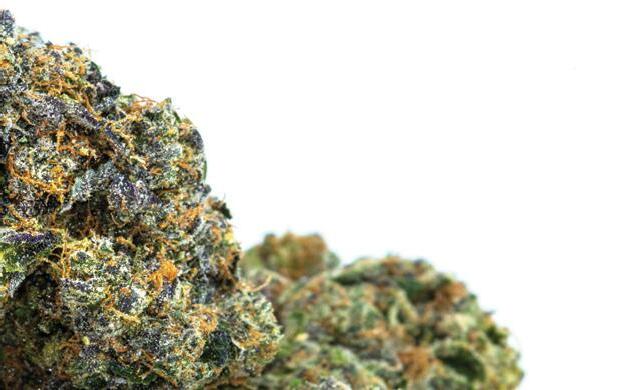













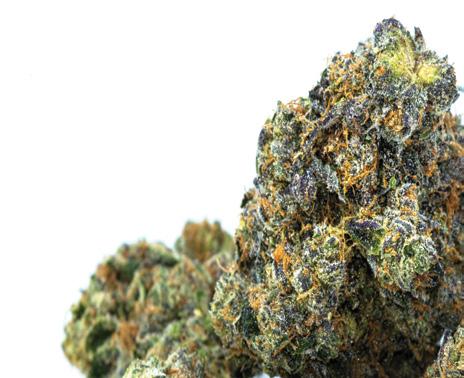





































105 Magazine May 2024 CATEGORIES 50+ BRANDS 200+ PRODUCTS 10K+ D8, THC-A , AND MORE AIR FRESHENER • APPAREL • ASHTRAYS • BATS • CBD • CONCENTRATES • CREAMERS • DELTA 8 DUGOUTS • E-LIQUID • GLASS • GLASS ANIMALS • GLASS BUBBLERS • GLASS CHILLUMS GLASS SHERLOCKS • GLASS SPOONS • GLASS STEAMROLLERS • GRINDERS • HOOKAHS HOOKAH CHARCOAL • HOOKAH SHISHA • INCENSE • KITS • LIGHTER BUTANE • LIGHTERS PIPE ACC • PIPE CLEANERS • ROLLING TRAYS • SAFE CANS • SCALES • STORAGE • SUPPLEMENTS TOBACCO ACC • URINE FETISH • VAPORIZERS • WATERPIPES • WATERPIPE ACC • ZIP BAGS FREE SHIPPING WON’T ALWAYS GUARANTEE THAT YOU’LL GET THE BEST PRICE. WE WILL. ORDER NOW | CALL NOW | QUANTITY DISCOUNTS AVAILABLE P +1-346-SHOP-MWI | T +1-888-694-6453 | F +1-800-619-5112 | sales@goMWI.com | goMWI.com
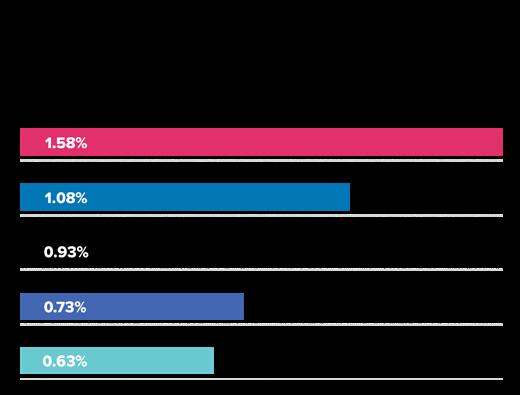
team analyzed policies across 11 social media platforms regarding general community guidelines, advertising and drug-related content, specifically focusing on cannabis. The findings revealed that while most platforms prohibit direct cannabis sales, there is less consistency in their approach to cannabis promotion. For instance, while some explicitly addressed distinctions between marijuana and CBD products, others lacked clarity on jurisdictional differences
in regulations.
Clearly, the move to allow non-ingestible CBD doesn’t quite explain the deluge of hemp-derived THC products that have shown up on our feeds, seemingly out of nowhere. But the loosening of restrictions does, in fact, widen the cracks through which noncompliant ads can slip. Meta’s “police force” as it were, is admittedly understaffed and thus relies on algorithms, which monitor language. With more allowable language,
there is more wiggle room for advertisers willing to play on the edge. See Sidebars 1 and 2 for more information on the how and why of restricted ads slipping through the cracks.
“Reviewing ads from millions of advertisers globally against the advertising standards is not without challenges. Our enforcement isn’t perfect, and both machines and people make mistakes,” the Meta Business Help Center states directly.
Continued on Page 108
Facebook: beyond the topical
So, Zuck and his minions have eased restrictions, allowing the advertisement of non-ingestible CBD products—and by noningestible, we mean topicals, like lotions or bath bombs. But considering the deluge of ads coming through the platform for all manner of hemp THC products including beverages, gummies, chocolates and even flower, there is still a mystery to be solved here. How are these companies skirting the rules while the rest of us are stuck in Facebook jail?
Policy Enforcement Challenges. The scale of platforms like Facebook (Meta) makes it challenging to catch and enforce all policy violations immediately. Some ads might slip through the cracks, especially if they are subtly worded or if the advertisers find loopholes in the policy wording.
Creative Marketing Strategies. Advertisers might use creative strategies to circumvent the advertising restrictions. This could include using ambiguous language, focusing on the product’s wellness aspects without explicitly stating it’s ingestible, or advertising a brand broadly while not directly mentioning the ingestible products.
Third-party Platforms. Some ads might be placed through third-party platforms or services that have different policies or levels of scrutiny
Continued on Page 108

ad laundering?
the thirdparty loophole
Third-party advertising platforms like Eggroll and Perfect Audience can place ads on Facebook for businesses, even if those businesses can’t directly due to Facebook restrictions. They work by using tools like the Facebook Pixel, which tracks users’ online activity, to retarget ads more precisely on Facebook based on what users do on other websites. This is done through
a separate system that connects with Facebook, so businesses can still advertise there without using Facebook’s own ad manager.
Here are a few third-party advertising platforms that use these techniques:
• Egroll
• Perfect Audience
• Ad Roll
These platforms have tools and features that might not be available directly through Facebook’s advertising system, allowing for more complex advertising strategies. They nominally comply with Facebook’s rules but operate through a different system, which can sometimes have different oversight and capabilities.
Ed Quest 106 Magazine May 2024



Projected total ad spend for social media marketing in 2024
320 Million 219.8 Billion 28.8
compared to Facebook’s direct advertising platform, leading to a broader range of products being advertised. This is a massive loophole; see the Sidebar 2 for more.
Rapid Reporting and Take-down
Process. Even if such ads appear, Facebook’s reporting mechanism often depends on users reporting non-compliant ads, which are then reviewed and possibly removed. They can appear until reported and reviewed, which means some non-compliant ads might be seen by users before any action is taken by Facebook. Additionally, one could speculate that if the ad targets users whose browsing and purchasing habits show openness to such products, the odds of it being reported drop significantly.

If an ad is rejected for not meeting Facebook’s advertising standards, the advertiser can revise it to address the issue. After editing and republishing, Facebook will review the ad again. However, if advertisers are found to be submitting ads that severely or repeatedly violate policies, Facebook may take further action beyond rejecting ads, such as restricting their business or user account from advertising in the future.
Among the platforms, Tumblr emerged as one of the most sophisticated in regulating cannabisrelated content. It not only specified marijuana but also distinguished between CBD and other hemp-derived products, considering jurisdictional differences, and setting a minimum age restriction of
21. Platforms like Facebook, Instagram, Pinterest, Twitch and YouTube exhibited similar policies, recognizing cannabis but failed to acknowledge jurisdictional differences. Ultimately, Enforcement isn’t guaranteed, as violations of platform policies are common. Unclear language regarding “promotion” definitions and enforcement protocols complicates matters, highlighting the necessity for clearer and more detailed policies, especially given the prevalence of user-generated content promoting cannabis use.
Most recently, Twitter/X made headlines for loosening its rules when it comes to cannabisrelated ads – both hemp and marijuana. Now, businesses that are verified and operating within state
laws can feature packaged cannabis products in their ads. According to a blog post by Alexa Alianiello, who heads sales and partnerships at Twitter/X, certified cannabis advertisers are now permitted to responsibly link to their websites where they promote the sale of CBD, THC and other cannabis-related products.
According to the Cannabis Marketing Association, while Twitter/X advertisers have seen mixed results, it’s important to remember that with any advertising initiative, success depends on the match of the brand and the campaign to the platform — it’s not a onesize-fits-all approach.
Alianiello commented in her blog post on how the platform has gathered meaningful feedback from the cannabis industry
Facebook
By the #’s
(cont.)
5.17 Billion 6.7
Number
worldwide Monthly number of social media platforms accessed by average user Increase of global social media users, 2023-24
of
advertising expenditure now allocated to social media
of social media users
Percentage
total digital
Ed Quest 108 Magazine May 2024
Among the platforms, Tumblr emerged as one of the most sophisticated in regulating cannabis-related content . . . considering jurisdictional di erences, and setting a minimum age restriction of 21.
which they have taken into consideration to create even more clarity and opportunity. For the cannabis business community, that should signal that a cohesive approach to cannabis marketing is possible when taken in incremental and repetitive steps. In the meantime, the best advice for retailers is to hang tight, keep an eye on policy changes, and do their best to play by the rules. Because in the ever-changing landscape of social media, adaptability is key.

what’s in a name?






“Cannabis” is a genus with several subspecies, including Cannabis Indica, Cannabis Sativa, and Cannabis Ruderalis. The only true distinction between what we think of as “marijuana” and “hemp” is a legal one, set forth by the Farm Bill of 2018, which defined hemp as basically any cannabis plant with less than .3% THC on a dry weight basis. This can create confusion in language when having intricate discussions that include both varietals–federally legal and federally illegal.












When we are making a general reference to the plant and the movement, whether above or below the THC threshold—whether medicine or rope—we use “cannabis.” This is also the preferred term when discussing varietals above the threshold without the need for comparative reference to “hemp,” which of course, references any cannabis plant below the threshold.
We use “marijuana” specifically to distinguish cannabis types that have a THC content higher than the legal threshold defined by law. In such discussions, “hemp” again refers to cannabis with less than 0.3% THC, and “marijuana” denotes those varietals with higher levels of THC.
Put more simply: It’s all cannabis. “Hemp” and “marijuana” are simply linguistic constructs we use for the sake of clarity.













GOING GREEN (ISH)

The How and Why of Adopting Sustainable Practices
By Sofia Noillif

They’re in our daily conversations, blending into the ambient hum of consumer discourse. Terms like “sustainable development,” “green,” “eco-friendly,” “carbon footprint,” “fair trade,” and “environmental impact” are scrawled across the items in our shopping cart, from laundry detergent to our morning cup of coffee, adding to our collective confusion, as well as our general sense of information overload. The barrage of buzzwords often raises skepticism: Are these promises genuine, or simply a facade to funnel our finances upward? It’s critical
to pierce through this veneer of corporate greenwashing to grasp the gravity of genuine environmental issues.
Fact: The planet is in peril—and its problems stretch well beyond the climate crisis, though everything is interconnected. Deforestation, biodiversity loss, water pollution, air pollution, soil degradation—the troubles are legion, and they aren’t going away. This isn’t a partisan statement. It’s simply reality. As theses compounding crises bring us increasingly closer to a moment
of reckoning for our species, it’s important that we ask ourselves what we can do to help create a better future. This industry in particular is uniquely rooted in a legacy of countercultural values that espoused environmentalism, organic cultivation, and sustainable living. The players owe it to themselves, their forebears—and to the mother of all mothers, Madam Earth—to introspectively examine the practices of the industry and honestly commit to their improvement.
Continued on Page 112
Fact: The planet is in peril—and its problems stretch well beyond the climate crisis . . . Deforestation, biodiversity loss, water pollution, air pollution, soil degradation—the troubles are legion, and they aren’t going away. This isn’t a partisan statement. It’s simply reality.
Ed Quest
110 Magazine May 2024








111 Magazine May 2024 BOLD NEW LOOK © 2023 Herbal Brands, Inc. All rights reserved. Order Herbal Clean Today 800.523.5556 | HerbalClean.com Available in select markets now! THE STRONGEST HERBAL CLEANSE EVER CREATED. The most potent same-day detox.

SUSTAINABILITY IN RETAIL
While sustainability and corporate social responsibility (CSR)—see sidebar—wear many hats and even boots, their applications to the retail space can be simplified to a handful of concepts: sustainable supply chain management, packaging, and ethical manufacturing processes. In a nutshell, here is what they mean and why they are challenging sustainability:
Supply Chain
This encompasses the entire process from design and manufacturing to distribution and retail. It involves material sourcing, production, quality testing, packaging, and delivery and presents significant challenges when it comes to sustainability, making its management a highly specialized profession. Among them are regulatory inconsistencies that complicate standardization, making it difficult for manufacturers to do the right thing, energy-intensive practices and reliance on non-biodegradable materials.
Packaging
In 2018, the United States produced 35.7 million tons of plastic, which constituted 12.2% of all municipal solid waste. A significant portion, over 14.5 million tons, originated from packaging relevant to the retail industry, such as bags, sacks, and wraps (EPA, 2024). Despite this considerable output, recycling rates were notably low—and that’s putting in nicely. In reality, plastic recycling has been an abject failure. While a bottle of plastic can look harmless, the impact of plastic pollution should keep you up at night. Plastics take hundreds of years to decompose, accumulating in landfills and natural habitats. They break down into microplastics, which contaminate water bodies and soil, entering the food chain and posing health risks to animals and humans.
Ethical Manufacturing Process
Products and accessories that are manufactured overseas where labor standards and environmental regulations may be lax. Regions such as South and Southeast Asia have been highlighted in various reports labor violations, such as child labor or unfair wages (ILO, 2024 ).
SIMPLE STEPS
3 Things You Can Do Right Now to Help Save the World
Beyond what you probably already do from the kindness of your heart such as supporting your community little leagues, treating your employees with kindness and really really trying to recycle these boxes piling in the backroom, there are a few things you can do to help our industry get a sustainable transformational makeover.
Flex that purchasing power
As a retailer or distributor, leveraging your purchasing power is key to driving sustainability in the industry. The market will shift towards sustainability when consumer demand aligns with eco-friendly practices. By choosing manufacturers that shun child labor, use biodegradable materials, minimize packaging, and offer refillable products, you signal the need for change. With large corporations now entering the market, the opportunity for impactful change is significant, as these entities can adopt sustainable practices while maintaining profitability.
Higher Education
Three-quarters of Americans value sustainability when shopping, reflecting a strong preference for environmentally responsible products (IPSOS, 2024). This indicates a willingness to invest more in sustainable goods and an interest in the practices of the companies behind them. Consider highlighting eco-friendly options in your store and engaging with customers about the benefits of supporting sustainable brands to facilitate informed choices.
Advocacy
Smoke shop retailers can champion public health and environmental sustainability by educating customers on eco-conscious purchases through in-store and online engagement, supporting green initiatives financially and through partnerships, and advocating for industry regulations that bolster environmental protection and sustainable business operations.
SUSTAINABILITY FOR DUMMIES
A Few Bits of Trivia to Help You Sound Smarter at Parties Sustainability: A Quick History

Once upon a time in Germany, Hans Carl von Carlowitz, a mining administrator and tax accountant with a possible penchant for treehugging (though history remains silent on this), made a groundbreaking contribution. In 1713, he penned “Sylvicultura Oeconomica,” a book tackling the then pressing issues of deforestation and timber shortages that were jeopardizing local industries.
His pioneering work introduced the concept of “nachhaltende nutzung,” or “sustainable use,” championing the idea that forests should be managed in such a way that trees are harvested no faster than they can regenerate. Not rocket science, you’d think, and you’d be correct, but keep in mind that in the early 18th Century, practicing rocket science would have likely gotten you burned at the stake. Obvious though the concept may seem (the harvesting thing, not rocket science) it was only then that the notion of sustainability made it in the lexicon of the so-called developed world. It’s important to note that this was a revelation only for the “developed world,” as indigenous communities across the globe had figured this one out for time immemorial. Sometimes the obvious is elusive.
Fast forward a few centuries to the late 1980s when the global community, AKA our world leaders, finally acknowledged the unsustainable pace of human consumption in relation to the planet’s ability to replenish its resources. This awakening was crystallized in the acclaimed Brundtland report, which popularized the term “Sustainable Development,” defining it as a form of development that satisfies our current needs without compromising future generations’ ability to meet their own. To grossly oversimplify, the idea emphasizes the importance of not being a selfish asshole; Other people, notably, future generations will need resources too, so save some for them. Puff, puff, pass, as it were.
Feeling overwhelmed yet? Don’t worry; there won’t be a quiz. No one is judging you besides Karen, and Karen judges everyone.
H. C. von Carlowitz
112 Magazine May 2024
Take a deep breath as you absorb the knowledge shared, and ponder the wise words of Maya Angelou: “You can’t really know where you’re going until you know where you have been.” So where were we?
An Introduction to Corporate Social Responsibility

Once upon a time (as in, the mid20th Century) walked this earth the almost famous Howard R. Bowen, an American economist and educator who made it into our history books, as well as Wikipedia as the father of Corporate Social Responsibility, AKA CSR—because who doesn’t love acronyms? While no teenager has never had a poster of Bowen hanging on their bedroom wall, the man’s contribution to making the world a better place cannot be overlooked—plus, the knowledge of his existence can be the difference between winning or losing at Trivial Pursuit, so . . . you’re welcome.
Bowen posited that business leaders have responsibilities to society that extend beyond making profits for shareholders. Bowen’s ideas were revolutionary at the time because they challenged the traditional view that a business’s sole purpose was to generate profit for its owners or shareholders. Instead, he introduced the notion that companies are integral parts of the larger social system and, as such, should act in ways that benefit society. This concept has since been expanded upon and incorporated into various business practices, leading to initiatives focused on environmental sustainability, ethical labor practices, and community engagement, among others.
But I am just a small business owner; I don’t have shareholders, you might think. Well, there is no such thing as too small to make a difference. Think of Sam Gamgee. Very likely, you are sponsoring your local youth baseball team, or maybe supporting your staff to volunteer in your community soup kitchen. Or maybe you care enough to recycle and offer reusable bags to your customers? Congratulations, you are already a proud member of Team CSR.
A NOTE ON “GREEWASHING”
The surge in consumer demand for sustainable products has led to a troubling trend where some businesses falsely claim environmental or social responsibility as a marketing ploy. This deceptive practice, known as “greenwashing,” aimed at appealing to eco-conscious consumers, often involves overstating or fabricating their green initiatives. Make sure to do your due diligence and research brands, looking for third-party certifications and sustainability reports.
About the Author:
Sofia Noillif (not pictured) is an experienced microbiologist and natural resource management specialist who holds a Master’s degree in Environmental Management and ten years of professional experience.


About Us:
Our mission is to be your front-runner distributor for a true one-stop shopping experience. We offer the convenience of multiple brands for items that guarantee maximum profitability, recognition, and value for the retailer plus the consumer. Through our commitment and dedication to our customer’s needs, we strive to surpass competitors in quality, customer satisfaction, and superior financial performance! Simply put, your success is our success!

















 H.R. Bowen
H.R. Bowen
PhreshPicks.com 833-2PHRESH @phreshpicksdist
@phreshpicks FREE Subscription Stay Connected wıth Your FREE Subscription





CONX420 CONX420.COM SAVE UP TO 20% ON ORDERS! • BUYERS SAVE OVER �5,000 PER MONTH! Sign-Up Today and Get Your First 3 Months FREE! Use Code FREE3 UNLOCK INCREDIBLE SAVINGS TODAY JOIN CONX420 THE Counter Culture Group Purchasing Organization
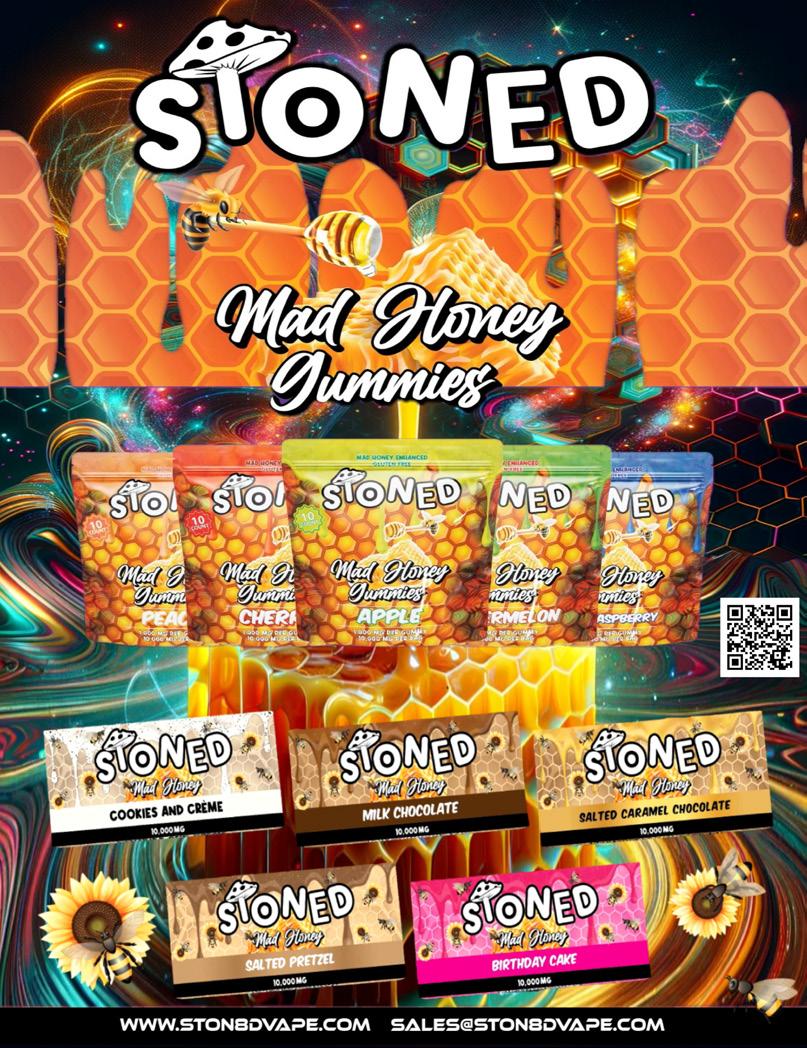
moodmats
Thicket Lightyear Torch
Pew, pew, pew! From the creators of the Thicket thermos bong comes the Thicket Lightyear Torch, an unforgettable heat blaster from the Spaceout series, engineered with Anakin Skywalker’s precision and decked out with the swagger of Han Solo.
Designed to withstand cosmic blows, this torch features an adjustable flame and a stainless-steel tip, along with a user-friendly trigger and lock mechanism that facilitates effortless operation and continuous use, allowing you to safely enter the hyperspace with style.
With its iconic retro space design and monster variety of explosive color combinations, Thicket’s Lightyear Torch comes in hot and hits loud, with an unforgettable design that scorches the competition. May the torch be with you.

Editor’s Note: After further contemplation, we would have gone with a Buck Rogers comparison on this one, given the retro space design, but hindsight is 20/20 and we’re at deadline, so Star Wars shall win the day.

In the mood to get super artsy while helping save the planet?
Your quest starts here with moodmats, Earth’s original neoprene upcycling company. Neowhat?!? For those who skipped inorganic chemistry, neoprene can be found in wetsuits, gaskets, weatherstripping, wheelchair seat molds, car tires, and plenty more.

The company and its parent, LavaRubber, turned those nasty waste products into practical, stylish, unique mats preventing around two tons of material from entering the landfills every month. The mats come in various sizes, designs, and shapes and can be used as pipe and bong mats, drink coasters, sink mats, trivets, yoga mats and surfboard tail mat. moodmats offers extensive art series featuring talented American artists including UV and glow in the dark pieces that will turn your living room into a coveted Soho gallery.

Exhaler by Blown Glass Goods
Sometimes, you just need to breathe—but sometimes, inhaling is even better. And for those moments, try inhaling with the Exhaler from Blown Glass. This glass pipe cleverly modeled after the classic medical inhaler design invites you to inhale serenity and exhale burdens, echoing the peaceful rhythm of yoga breaths.
Its minimalist design ensures easy cleaning and portability, perfect for on-the-go moments or tranquil at-home sessions, bringing stylish harmony and simplicity to your smoking routine while promising to be a conversation starter among friends and fellow aficionados. Embrace the blend of communal joy and personal zen with the Exhaler, your companion in finding your “me time.” Now, breathe.

Quest 4 The Best 116 Magazine May 2024
Gear Premium x Cheech & Chong Glass “My Homies” Sidekick Water Pipe
Look out for this exclusive “My Homies” Sidekick Water Pipe, a special edition GEAR Premium® x Cheech & Chong® collaboration, and a homage to the Legends themselves. Standing 12” tall and designed with a 7mm thickness, the Sidekick combines durability with a classic but caricatural aesthetics. Accompanied by a matching lighter and pin, and presented in a collectible tin featuring art by Hood Van Gogh, this set goes beyond utility to become a piece of art. This limited collection, with only 420 crafted, offers a once in a stoner lifetime experience, but you might want to keep this one in the box, as any respectable collector would. Each water pipe is individually numbered and paired with a certificate of authenticity signed by Cheech & Chong, making it more than just your regular accessory —it’s a piece of history.

HempLucid Gummies
Established by Chase Hudson, Hemp Lucid was born from his eye-opening experience as a first responder, witnessing the distress of a terminally ill patient surrounded by more than 50 prescription pill bottles. A believer in natural medicine, he vowed to uncover wellness alternatives leading to the creation of HempLucid, a Utah based family enterprise offering various products from CBD to Delta8 to fungi—in a variety of synergizing blends.
Their gummies line, offered in a multitude of delicious flavors, includes varieties for sleep, stress, and focus, combining nature’s finest mushrooms and cannabinoids, reflecting the company’s holistic approach to health. With a 4.6-star rating, these gummies stand out for their effective and natural formulations, backed by HempLucid’s commitment to sustainability, ethical sourcing, and organic ingredients.
UpliftCBD Full Spectrum Topical
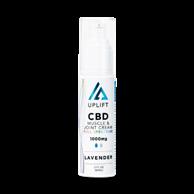
Feel like your muscles are turning into concrete and your knees into the Tin Man from “The Wizard of Oz”? UPLIFT’s CBD Full Spectrum Topical Lotion is here to soothe those sore muscles and creaky joints. This premium lotion, crafted with full-spectrum CBD and less than 0.3% THC, is all about hydration, restoration, and protection. Infused with organic MCT oil from coconuts, it deeply nourishes the skin.
Choose from Unscented, calming Lavender, or antiseptic Tea Tree scents, available in strengths of 1000mg and 2000mg. Ideal for daily use, UPLIFT’s lotion is more than a post-exercise remedy; it’s a comprehensive skincare solution, integrating the wellness benefits of CBD into your everyday routine, making aching muscles and stiff joints a fading memory. Speaking of joints, check out THC-A pre-rolls too!



117 Magazine May 2024

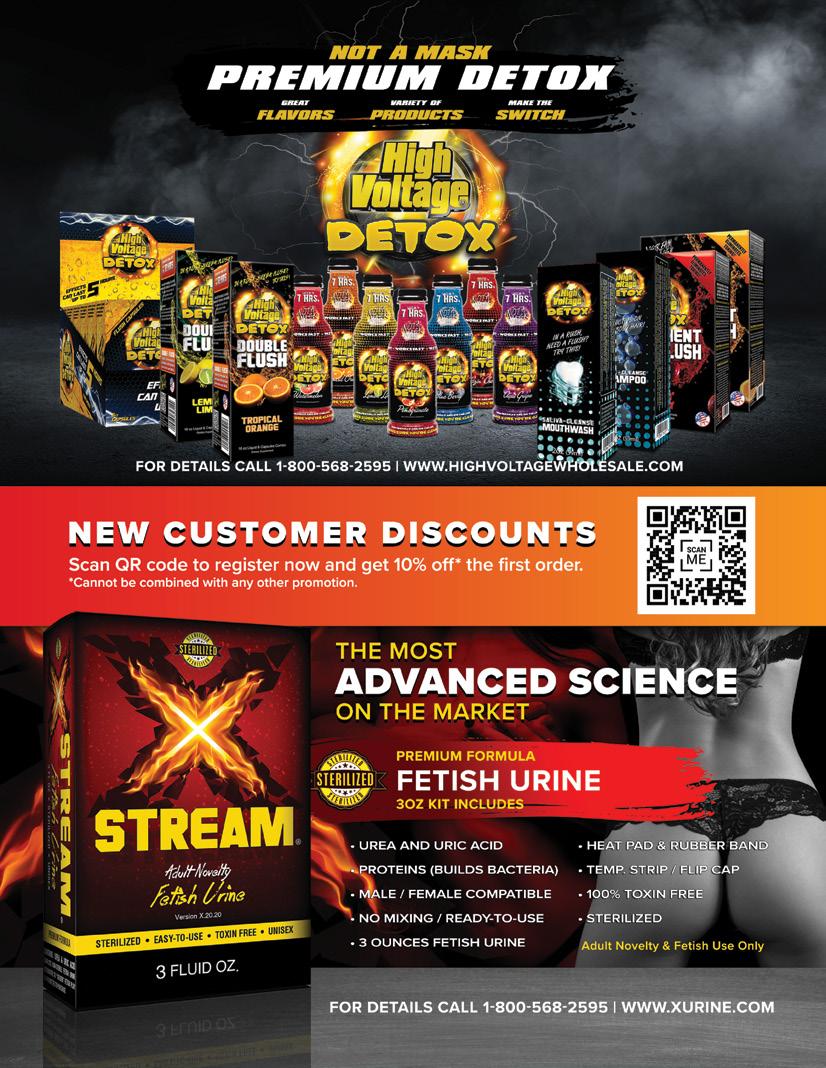
120 Magazine May 2024



PAWSITIVELY PROFITABLE: THE BILLON DOLLAR PET POWERHOUSE CARRY THE PET PRODUCT YOUR CUSTOMERS ARE LOOKING FOR! 5mg of CBD Oil Per Treat Jason Riccardi (201) 679-6787 jriccardi@ecoglobalpet.com HEALTHY CHEW TOYS TO GET 30% OFF WHOLESALE AND FREE SHIPPING CONTACT: Infused with 100 mg of CBD Per Bone














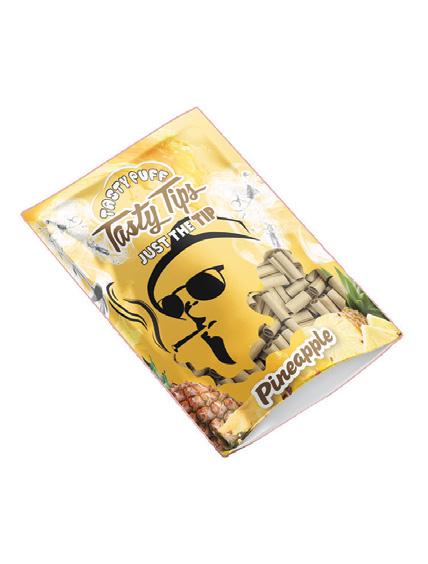
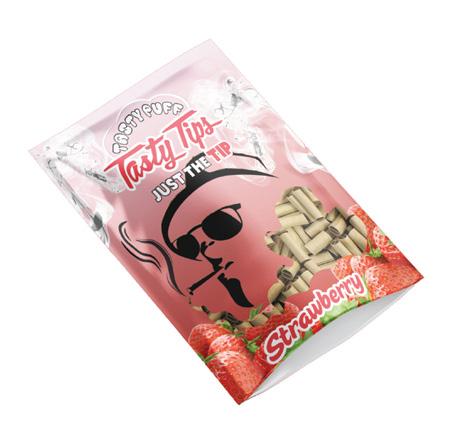

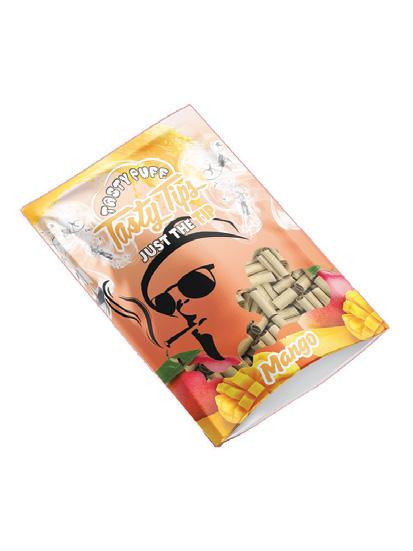

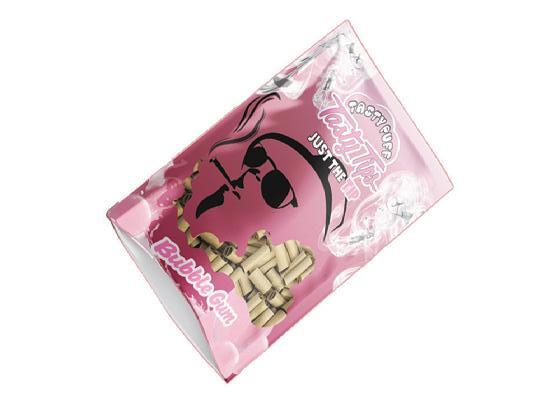

Strawberry ORDER AT TASTYPUFF.COM OR CALL 505 323 4477 -AVAILABLE FOR 360 ea. INCLUDES 12. 50CT PACKS OF EACH FLAVOR. 18mm 7mm NEW


























ANTI-VAPING ACTIVISTS ARE HARM-REDUCTION DENIERS
The Claim That Vaping is Big Tobacco’s Revenue Protection Ploy is a Myth
The case for vaping is simple and straightforward. By giving adult smokers access to nicotine absent the carcinogenic chemicals in tobacco smoke, vapor products significantly reduce the risk of smoking-related disease and death. Millions of exsmokers now lead tobacco-free lives because they quit by switching to vaping. Put another way, vaping is a textbook example of a harm-reduction tool, an intervention that makes drug use safer instead of encouraging abstinence.
The growing popularity of vaping among ex-smokers has created a problem for some prominent tobacco-control advocates. While they recognize harm reduction as a valid medical concept, their explicit goal has always been the eradication of nicotine and tobacco use.
 By Alli Boughner Vice President American Vapor Manufacturers Association
By Alli Boughner Vice President American Vapor Manufacturers Association
Follow (some) of the money
For all her complaining about the corrupting influence of money, Cohen nowhere mentions that her employer, the Bloomberg School of Public Health at Johns Hopkins, is named after infamous billionaire and anti-nicotine busybody Michael Bloomberg. The man has spent hundreds of millions of dollars to raise an army of activists, researchers and even journalists that campaigns against nicotine vaping.
an interest in THR because scientists developing low-risk smoking alternatives “were consistently refused research support from government agencies,” psychiatrist and addiction expert Dr. Sally Satel explained in 2015. “Investigating innovative methods to reduce the toll of smoking has thus far mainly relied on industry funding,” she added.
The other important detail Cohen overlooked is that most of these companies were not tobacco giants, but startups established by former smokers. Only later did legacy cigarette manufacturers begin investing in the vapor industry.
By giving adults a third choice, THR disrupted the anti-smoking industry’s plan to eliminate nicotine use. That may o end the prohibitionist sensibilities of Bloomberg and his beneficiaries, but it’s very good news for public health.
Their unfortunate solution to this conundrum? Frame tobacco harm reduction (THR) as a cigarette industry ploy to protect its profits.“The motivation of these corporations is to sell more products. Do not mistake their distorted idea of ‘harm reduction’ as anything more than that,” Dr. Joanna Cohen complained in a recent op-ed for The Hill.
There are manifold problems with this argument, but here are just two of the most critical. First, tobacco prohibitionists like Cohen are hypocrites with a financial incentive to attack vaping. Second, THR is in no way a creation of the tobacco industry.
If anybody in this debate has a financial conflict of interest, it’s activists like Cohen, whose salaries are paid by a Wall Street plutocrat with a prohibitionist agenda to push.
THR isn’t an industry ploy
The other fundamental problem with Cohen’s argument is that it’s blatantly false. In 2001, roughly a decade before the modern vapor industry was established, independent scientists were evaluating the potential of “tobacco products and pharmaceuticals that claim to preserve tobacco pleasure while reducing its toxic effects.”
Moreover, private companies took
Conclusion
The ultimate problem is that Bloomberg-funded activists like Cohen are trying to preserve an outdated model of anti-tobacco activism. They lobby for regulations (e.g. cigarette taxes) that gradually reduce tobacco use. Smokers tolerate these limitations and continue their habit until they die, or they try to quit with one of several ineffective nicotine replacement therapies.
By giving adults a third choice, THR disrupted the anti-smoking industry’s plan to eliminate nicotine use. That may offend the prohibitionist sensibilities of Bloomberg and his beneficiaries, but it’s very good news for public health.

Industry Associations 126 Magazine May 2024













































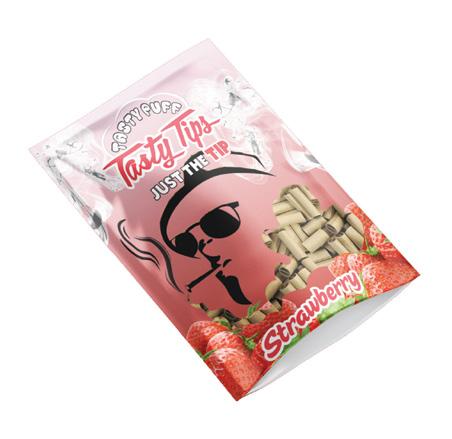
flavor INFUSED 109mm 100 HEMP flavored cones %IN A REUSABLE FRESH SEAL TUBE SWEET TIPS Twisted Mint Banana Watermelon Orange CreamRaspberryChocolate StrawberryMangoBubblegumBlueberryGrape Pineapple 12 GREAT FLAVORS PRODUCT DISPLAYS AVAILABLE FOR 324 ea. includes 180 tubes, 30ct. of each flavor, 1.80 ea. ( ) $ PRODUCT Containers AVAILABLE FOR 54 ea. $ $ INCLUDES 30 TUBES OF YOUR CHOSEN FLAVOR, 1.80 EA. ( $ ) NEW ORDER AT TASTYPUFF.COM OR CALL 505 323 4477 - -
128 Magazine May 2024 Smoke House Distribution 6-7 Smoxy / Big Apple 107 Sol Trading 76 STON8D 117 Supreme Whip 37 Tasty Pu 127, 122 Technic (Exsens) 85 Toro Imports 115 Trigg/Wet 9 Ultimate Product Distributors 18-19 Unishow / BiWin 125 Uplift CBD 1, 33, 52 Vapor Tech 124 VPR 16-17, 4647, 66-67 West Coast Gifts 95 White Diamond Kratom 64 Zig Zag / TPBI 24-25 Zydot 60 HERBA RE LEAF 86-87 Herbal Brands 111 High Voltage 119 Hush Kratom 73 Infinity Wholesale 71 JBrands FC Kr8om 34-35 Krave Kratom 91 Lucom USA Midwest Distribution GFi Mikes Worldwide 105 Orange Chronic 65 Partynuts FC, 14-15 Payless Distro / Vape in the Box 28-29, 42-43 Phresh Picks 10-11, 53, 97 Pu Brands FC, CI, 13, 19, 46, 117 Remarkable Herbs 58-59 SBK International 22-23 Serious Monkey Bizzness 99 Skeye Wholesale 51 3CHI 3 AFG 8, 12, 41, 57 Alphastrip 84 ALS 32 ANNBIZ 93 Botanaway 97 Calexotics 79 ConX420 114 CannaAid 95 Doob Tubes 94 Durity Distribution 61 Eco Global Pet 121 Formula 420 74-75, BC Four Seasons Trading / My Smoke 88-89 118 Genrev / Dazed 30-31 Glass Vegas 5 Got Vape 38-39 Happy Hippo 101 Headway Designs 72 Advertiser Directory

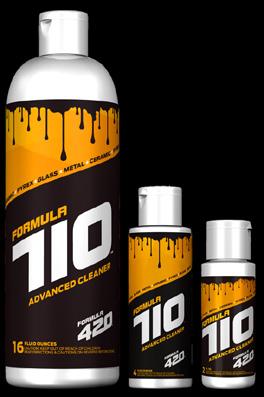



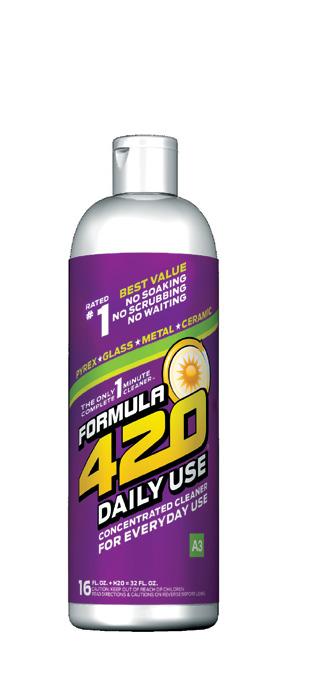
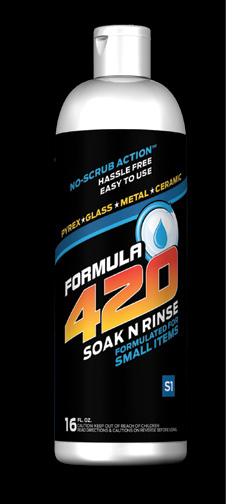

130 Magazine May 2024





























































 The collection honors our 144-year heritage, drawing inspiration from the historic artwork featured in our booklets and ads.
The collection honors our 144-year heritage, drawing inspiration from the historic artwork featured in our booklets and ads.














 By Sofia Noillif
By Sofia Noillif















































 By David Pogge
By David Pogge































 -Amy Short, Director & Tradeshow Manger, Glass Vegas
-Amy Short, Director & Tradeshow Manger, Glass Vegas






































 -Dawn Conger, Sr. Sales & Development Manager, TPE
-Dawn Conger, Sr. Sales & Development Manager, TPE





















 Photo credit: Lidia Ochoa, taken at Sue Carlton’s Familia Rancheria, High Sierras, California
Photo credit: Lidia Ochoa, taken at Sue Carlton’s Familia Rancheria, High Sierras, California






















































































 By Matt Weeks
By Matt Weeks















































































 By Rudy Carrillo
By Rudy Carrillo






















 By Darin Burt
By Darin Burt













































































 H.R. Bowen
H.R. Bowen














































 By Alli Boughner Vice President American Vapor Manufacturers Association
By Alli Boughner Vice President American Vapor Manufacturers Association



















































